Artists Quotations
6 Best Painting Techniques & Famous Artist Quotes
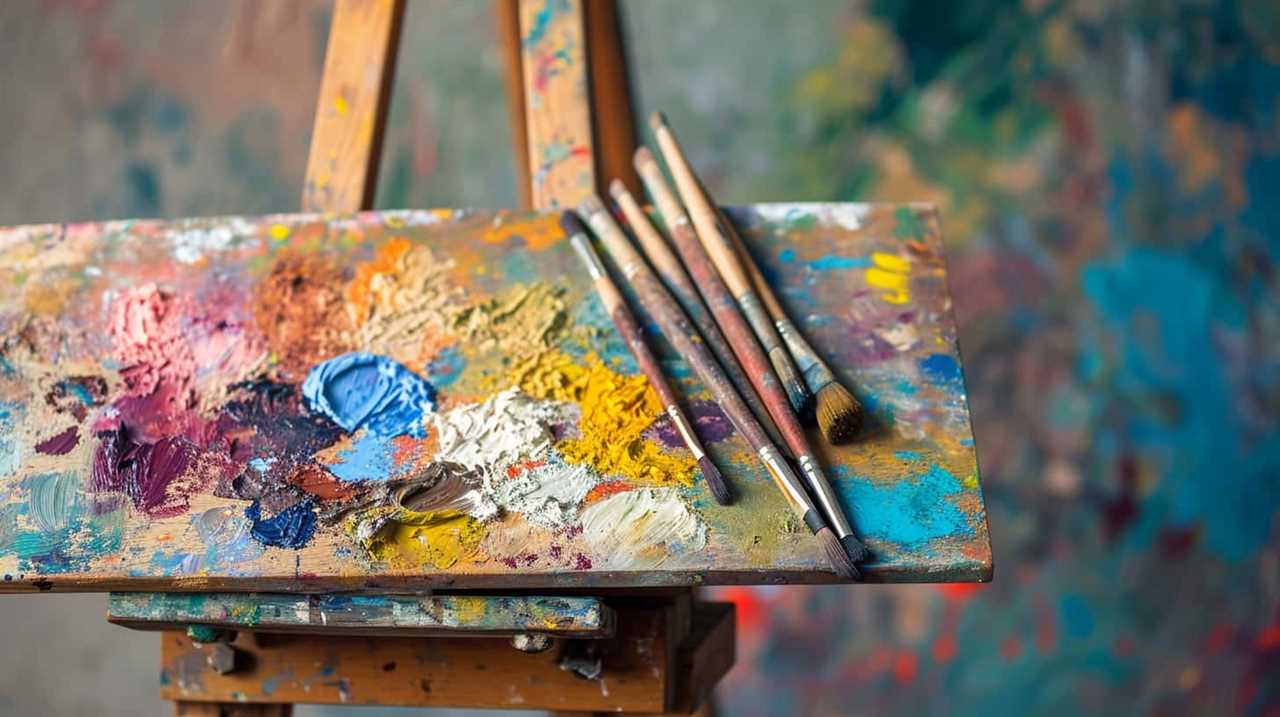
They say that a master painter’s brush strokes can speak volumes. In our quest for mastery, we have explored and compiled the six best painting techniques that have captivated the art world throughout history.
From the impasto technique, which uses thick layers of paint to create texture, to the dramatic use of light and shadow in tenebrism, these techniques hold the power to elevate our paintings to new heights.
But it’s not just the techniques that inspire us; the wisdom of famous artists also serves as a guiding light. In this article, we will not only unravel the secrets of these techniques, but we will also delve into the profound quotes that renowned artists have shared about their craft.
So let’s pick up our brushes and embark on this journey of artistic exploration together.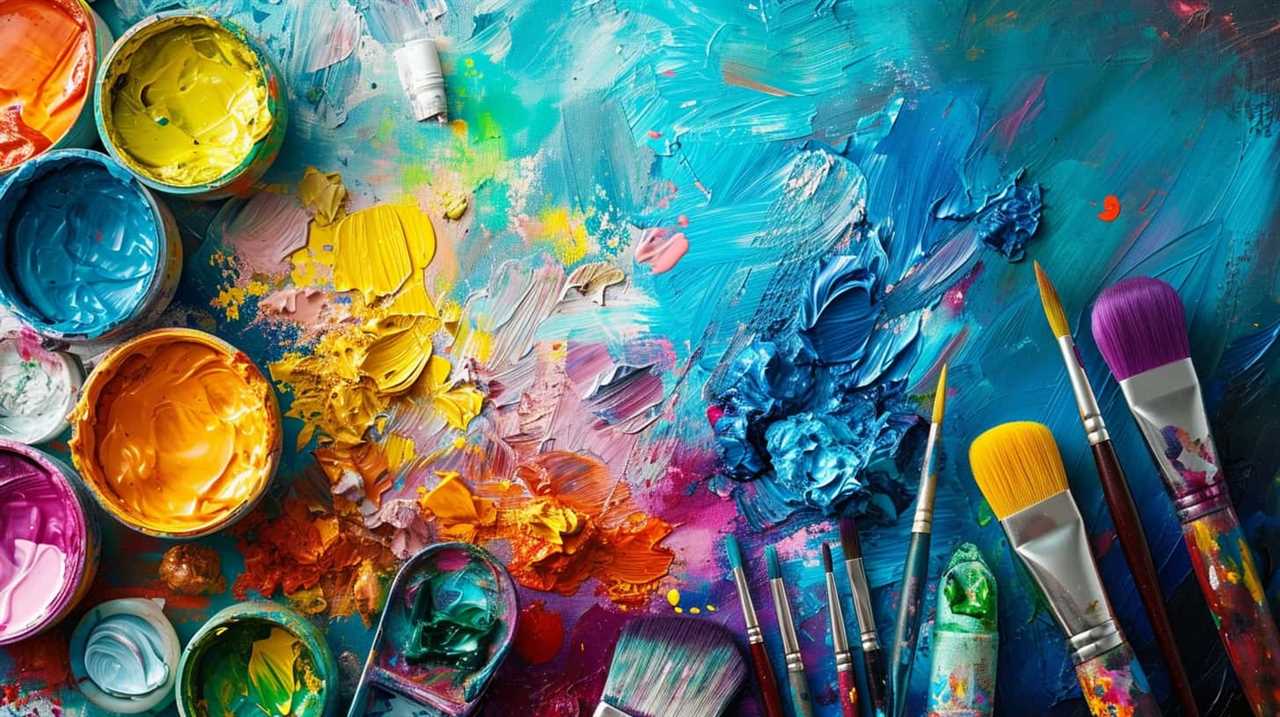
Key Takeaways
- Impasto technique allows artists to create texture and convey depth and movement in their paintings.
- Glazing technique enhances visual dimension and achieves luminous color by layering translucent colors.
- Wet-on-wet technique is a popular blending technique that creates smooth and harmonious blends between colors.
- Sfumato technique creates soft and hazy transitions between colors and adds depth and mystery to the painting.
- Chiaroscuro technique emphasizes the contrast between light and dark, creating a dramatic and three-dimensional effect.
Impasto: Thick Layers of Paint for Texture
Impasto, which is achieved by applying thick layers of paint to create texture, is a technique that we artists love to use. Creating textured effects through impasto allows us to convey depth and dimension in our paintings. By building up layers of paint, we can manipulate light and shadow, adding a tactile quality to our work.
Many famous artists are known for their masterful use of impasto techniques. One such artist is Vincent van Gogh, whose thick, expressive brushstrokes created a sense of movement and energy in his paintings. His iconic works, such as ‘Starry Night,’ are characterized by the bold, textured application of paint. Another artist renowned for his use of impasto is Rembrandt van Rijn. His portraits, such as ‘Self-Portrait with Two Circles,’ showcase his ability to create lifelike textures and capture the essence of his subjects.
Using impasto allows us to not only add visual interest to our paintings but also to evoke emotions and engage the viewer on a deeper level. The tactile quality of impasto invites the viewer to experience the painting through touch, making it a truly immersive experience.
As artists, we continue to explore and experiment with impasto techniques, pushing the boundaries of texture and creating unique and captivating works of art.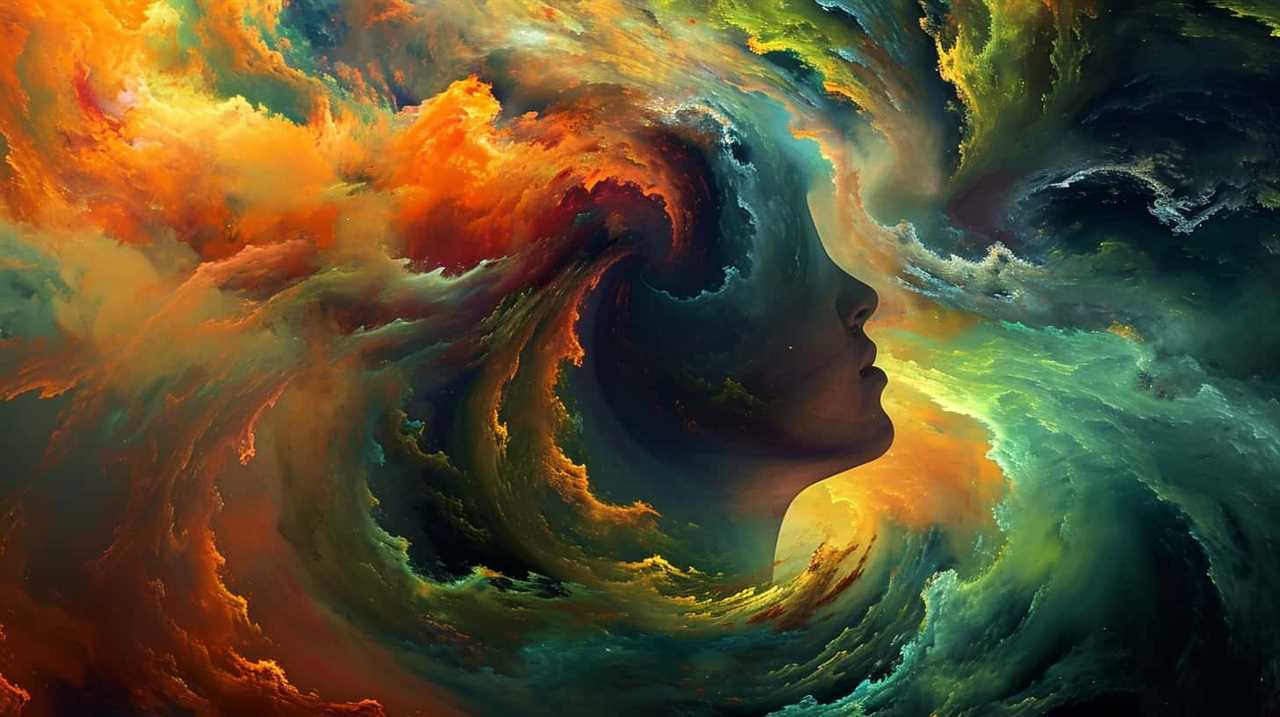
Glazing: Layering Translucent Colors for Depth
When it comes to painting techniques, glazing is a powerful tool for enhancing visual dimension and achieving luminous color. By layering translucent colors on top of each other, artists create depth and richness in their paintings.
The process involves applying thin layers of paint, allowing each layer to dry before adding the next, resulting in a stunning effect that captures light and adds a sense of luminosity to the artwork.
Enhancing Visual Dimension
We love enhancing the visual dimension of our paintings by utilizing the technique of glazing, which involves layering translucent colors to create depth. Glazing is a powerful tool for artists to explore color theory and create illusions of depth and space. By layering thin, translucent coats of paint over a dried base layer, we can achieve a remarkable level of depth and luminosity in our artworks. This technique allows us to build up layers of color, creating a sense of depth and dimension that is hard to achieve with a single layer of opaque paint. The layering of translucent colors adds richness and complexity to our paintings, making them visually captivating and engaging. Through the careful application of glazes, we can create a visual experience that draws the viewer in and invites them to explore the depths of our work.
| Color Theory | Creating Illusions | Enhancing Visual Dimension |
|---|---|---|
| Understanding the relationships between colors and how they interact with each other is essential for creating harmonious and visually appealing artworks. | Utilizing techniques such as glazing can create illusions of depth, space, and texture in a flat surface. | Glazing is a powerful tool for artists to enhance the visual dimension of their artworks, adding depth, complexity, and luminosity to their paintings. |
Achieving Luminous Color
To achieve luminous color in our paintings, we further explore the technique of glazing by layering translucent colors for added depth and dimension. Glazing allows us to achieve harmony and richness in our color palette, enhancing the visual impact of our artwork. By applying thin layers of translucent paint over previously dried layers, we can create a luminous effect that’s impossible to achieve with opaque colors alone.
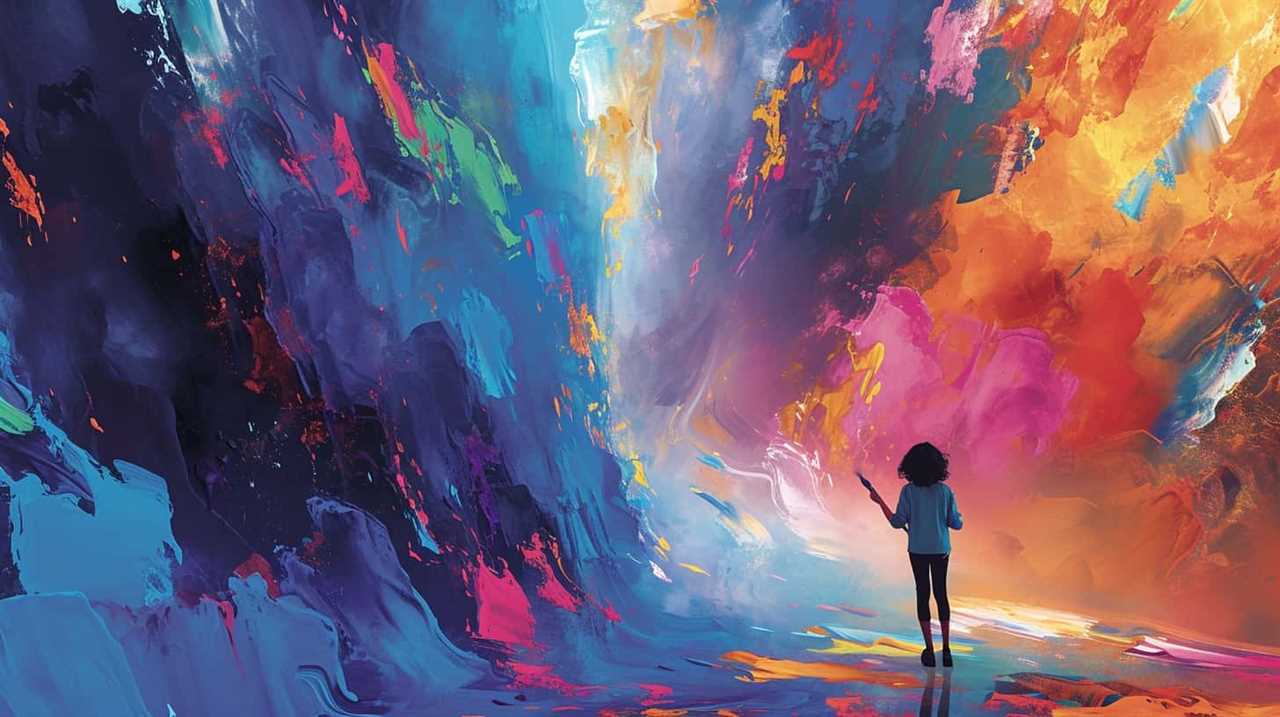
Color theory plays a crucial role in glazing. Understanding the interaction of colors and their optical properties allows us to strategically layer translucent colors to achieve the desired effect. For example, by layering a warm glaze over a cool base color, we can create a sense of depth and warmth. Conversely, layering a cool glaze over a warm base color can create a sense of coolness and distance.
Experimentation and observation are key to mastering the art of glazing and achieving luminous color in our paintings.
Wet-On-Wet: Blending Wet Paint for Seamless Transitions
How can wet-on-wet painting techniques be used to achieve seamless transitions between colors?
Wet-on-wet is a popular blending technique used by many artists to create smooth and seamless transitions between colors. By applying wet paint onto wet paint, artists can achieve a beautiful and harmonious blend of colors.
Here are three key ways wet-on-wet painting can be utilized to achieve seamless transitions:
- Blending with a brush: Using a soft brush, artists can gently blend two or more colors together on the canvas, creating a gradual transition from one color to another. This technique allows for precise control over the blending process, resulting in a seamless and natural effect.
- Layering thin washes: By layering thin washes of different colors on top of each other while the paint is still wet, artists can achieve a soft and gradual transition between the colors. This technique works particularly well for creating atmospheric effects or adding depth to a painting.
- Wet-on-wet glazing: Glazing involves applying a transparent layer of color over an existing layer of wet paint. By glazing wet-on-wet, artists can create subtle transitions and add depth to their artwork. This technique is often used to enhance realism and create a sense of luminosity in a painting.
Famous artist quotes on blending techniques:
- ‘Colors blend naturally when applied wet-on-wet. It’s like a dance where each color gracefully merges with the next.’ – Claude Monet
- ‘Wet-on-wet painting allows for seamless transitions between colors, giving life and movement to your artwork.’ – Georgia O’Keeffe
- ‘The magic of wet-on-wet lies in its ability to create a seamless flow of colors, capturing the essence of the subject and the artist’s vision.’ – Bob Ross
Dry Brush: Adding Texture With Minimal Paint
To create texture with minimal paint, we can utilize the dry brush technique, which involves using a small amount of paint on a dry brush to add varied and textured brushstrokes. This technique is highly effective in adding texture to paintings, as it allows for controlled application of paint and creates interesting visual effects.
Dry brush techniques are commonly used by artists to achieve a rough and textured appearance in their artwork. By using a dry brush with minimal paint, artists can create a broken and uneven stroke that adds depth and dimension to their paintings. The technique is particularly useful when trying to depict rough surfaces, such as tree barks, rocks, or fur.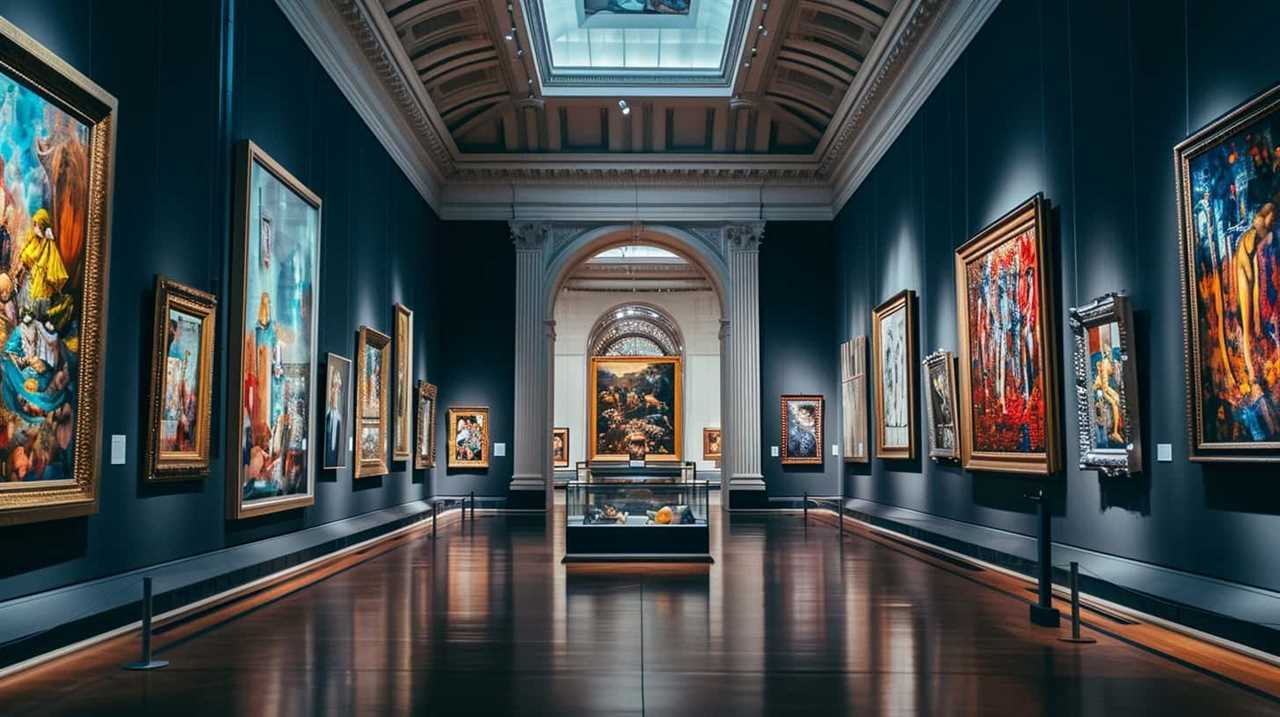
When using the dry brush technique, it’s important to have a firm and dry brush, as this allows for better control over the application of paint. The artist can then lightly drag the brush over the surface, creating a series of broken and uneven lines that simulate texture.
Adding texture through dry brush techniques can greatly enhance the overall visual impact of a painting. It adds interest and complexity to the artwork, making it more engaging for the viewer. By mastering this technique, artists can elevate their paintings to a new level of mastery and create stunning visual effects with minimal paint.
Sgraffito: Scratching Through Layers for Intricate Details
We love using the sgraffito technique because it allows us to scratch through layers of paint to create intricate details. This technique involves applying multiple layers of paint and then selectively removing certain areas to reveal the colors beneath, resulting in stunning and intricate patterns. Sgraffito is a highly versatile technique that can be used to create a wide range of effects and textures, adding depth and visual interest to a painting.
Here are three key reasons why sgraffito is such a valuable technique for artists: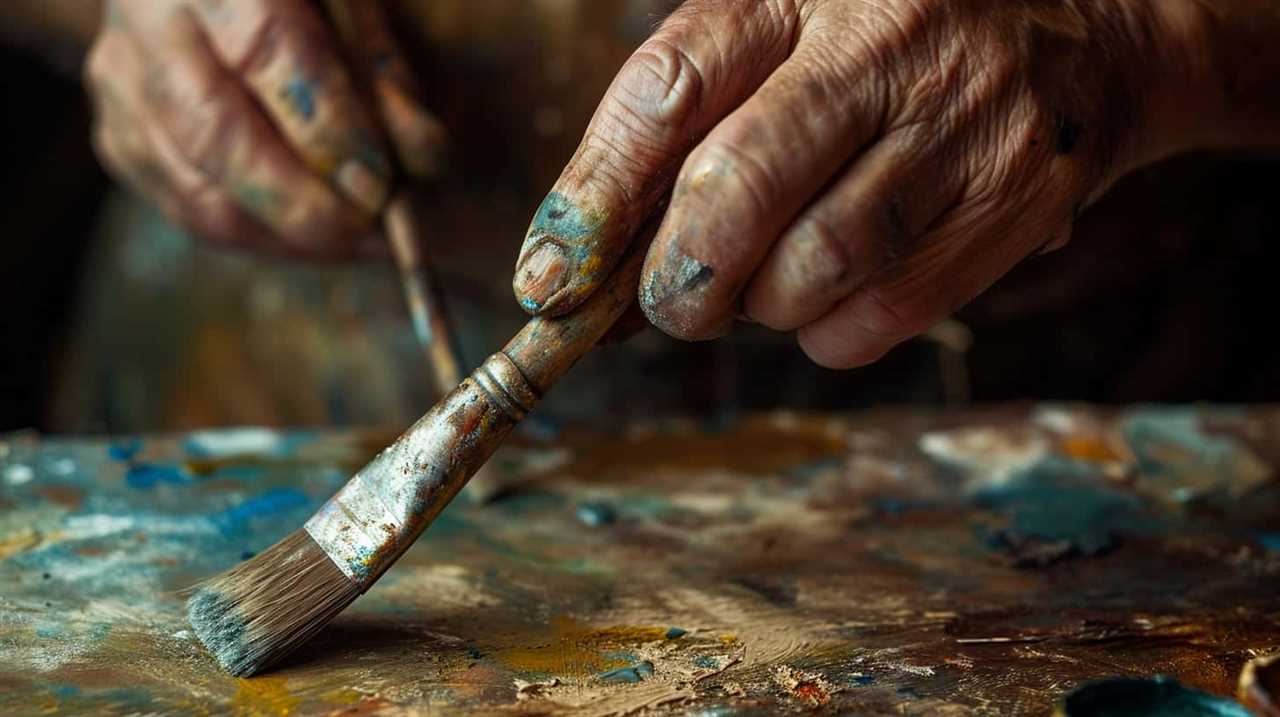
- Enhancing depth: By layering different colors of paint and then scratching through them, artists can create a sense of depth and dimension in their work. The contrasting colors peeking through the scratched areas add visual complexity and richness to the painting.
- Adding texture: Sgraffito allows artists to incorporate texture into their artwork. By selectively scratching through the paint, they can create a variety of surface effects, from fine lines to bold grooves. This adds tactile interest and can evoke different emotions and moods in the viewer.
- Expressing intricate details: The ability to scratch through layers of paint provides a level of control and precision that’s essential for capturing intricate details. Whether it’s delicate patterns or fine lines, sgraffito allows artists to achieve a level of intricacy that may be challenging with other techniques.
Tenebrism: Dramatic Use of Light and Shadow
Continuing from our exploration of the sgraffito technique, we now delve into the captivating world of tenebrism, using dramatic light and shadow to evoke powerful emotions in our paintings.
Tenebrism, derived from the Italian word ‘tenebroso’ meaning dark, is a painting technique that emerged during the Baroque period and was championed by artists such as Caravaggio.
Tenebrism is characterized by its symbolic depiction of light and shadow, with stark contrasts between illuminated areas and deep shadows. This technique creates a sense of drama, intensity, and mystery in the artwork, allowing the artist to convey complex emotions to the viewer. By manipulating light and shadow, artists can emphasize certain elements of the composition, intensify the emotional impact, and direct the viewer’s attention to key focal points.
The emotional impact of contrasting tones in tenebrist paintings is undeniable. The stark juxtaposition of light and shadow creates a heightened sense of tension and captures the viewer’s attention. The deep shadows can evoke a sense of foreboding or mystery, while the illuminated areas can convey hope, clarity, or even divine presence. This interplay of light and dark not only adds depth and dimension to the artwork but also evokes a visceral response from the viewer.
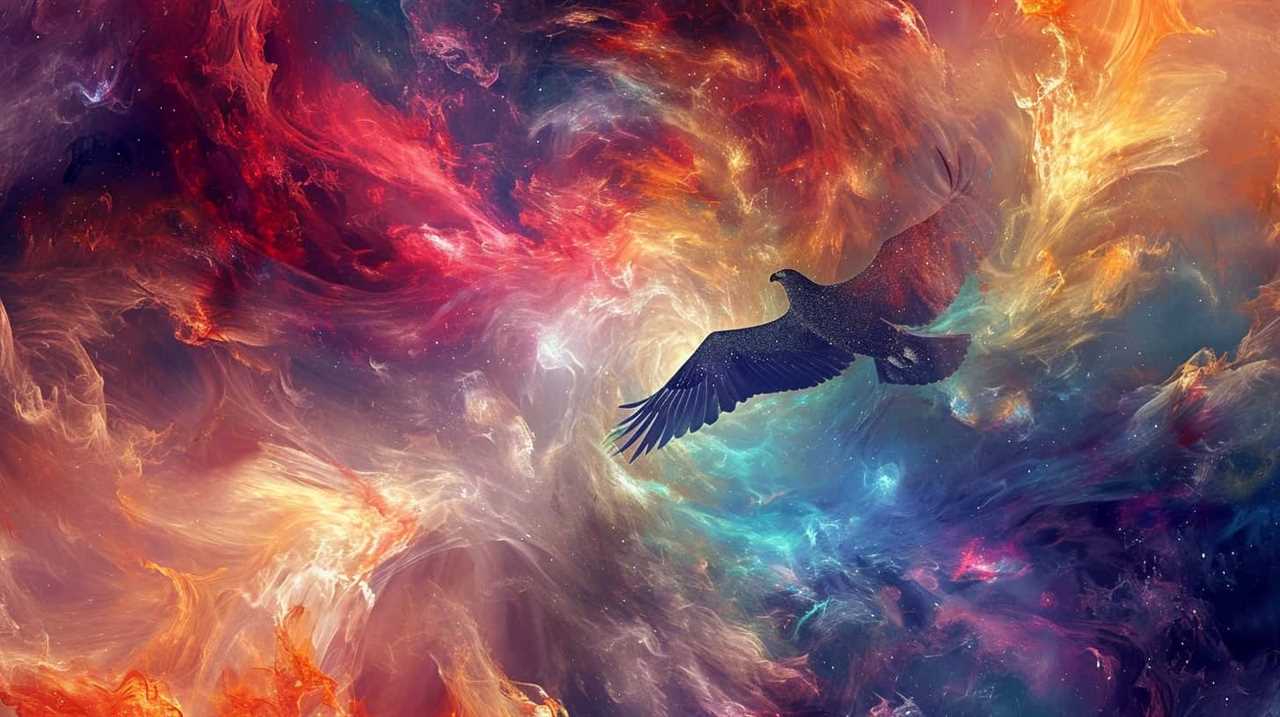
Mastering tenebrism requires a keen understanding of light and shadow, as well as the ability to manipulate these elements to create a desired emotional impact. By skillfully using contrasting tones, artists can elicit strong emotions and create captivating and evocative paintings that resonate with the viewer.
Frequently Asked Questions
Can I Achieve a Textured Effect With Thin Layers of Paint Instead of Using Impasto Technique?
Yes, achieving a textured effect with thin layers of paint is possible. By layering translucent colors and using various brush techniques, we can create depth and texture without relying on the impasto technique.
How Can I Prevent My Glazing Layers From Becoming Muddy or Opaque?
How can we prevent our glazing layers from becoming muddy or opaque? By using thin, transparent layers of paint and ensuring each layer is completely dry before applying the next, we can achieve smooth, luminous glazing effects.
Are There Any Specific Paint Brands or Types That Work Best for Wet-On-Wet Blending?
We recommend using high-quality paint brands like Winsor & Newton or Gamblin for wet-on-wet blending. These brands offer a wide range of colors and have excellent pigment load, allowing for smooth blending and vibrant results.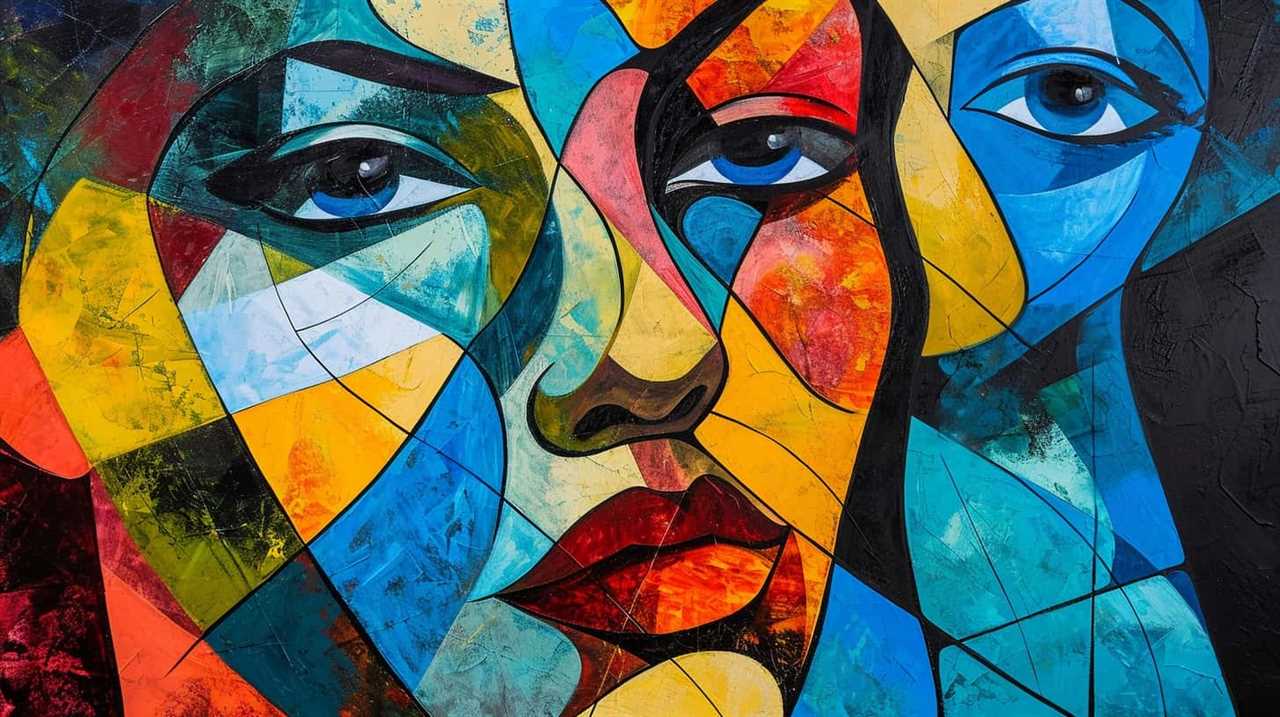
Can Dry Brushing Be Used to Create Smooth, Even Surfaces as Well, or Is It Only for Adding Texture?
Yes, dry brushing can be used to create smooth surfaces by applying thin layers of paint. While it is commonly used for adding texture, with the right technique and brush, it can also achieve a polished and even effect.
What Tools or Techniques Can I Use to Create Detailed Sgraffito Effects Without Damaging the Underlying Layers of Paint?
We can create intricate designs using various tools and blending techniques, ensuring the layers of paint remain intact. By employing careful application and precise scraping, we achieve a seamless finish while preserving the integrity of the underlying layers.
How Do Painting Techniques Influence Cultural Shifts According to Famous Artists?
Famous artists influencing culture can be seen through quotes from artists influencing culture. Painting techniques often reflect and shape societal values, traditions, and beliefs. From Monet’s impressionistic style to Warhol’s pop art, art has been a mirror of cultural shifts, challenging norms and perceptions.
Conclusion
In conclusion, exploring different painting techniques can add depth, texture, and intrigue to your artwork. From the thick layers of impasto to the delicate layering of glazing, each method offers a unique way to express your creativity.
As famous artists have said, ‘The purpose of art is washing the dust of daily life off our souls’ (Pablo Picasso) and ‘Every artist was first an amateur’ (Ralph Waldo Emerson).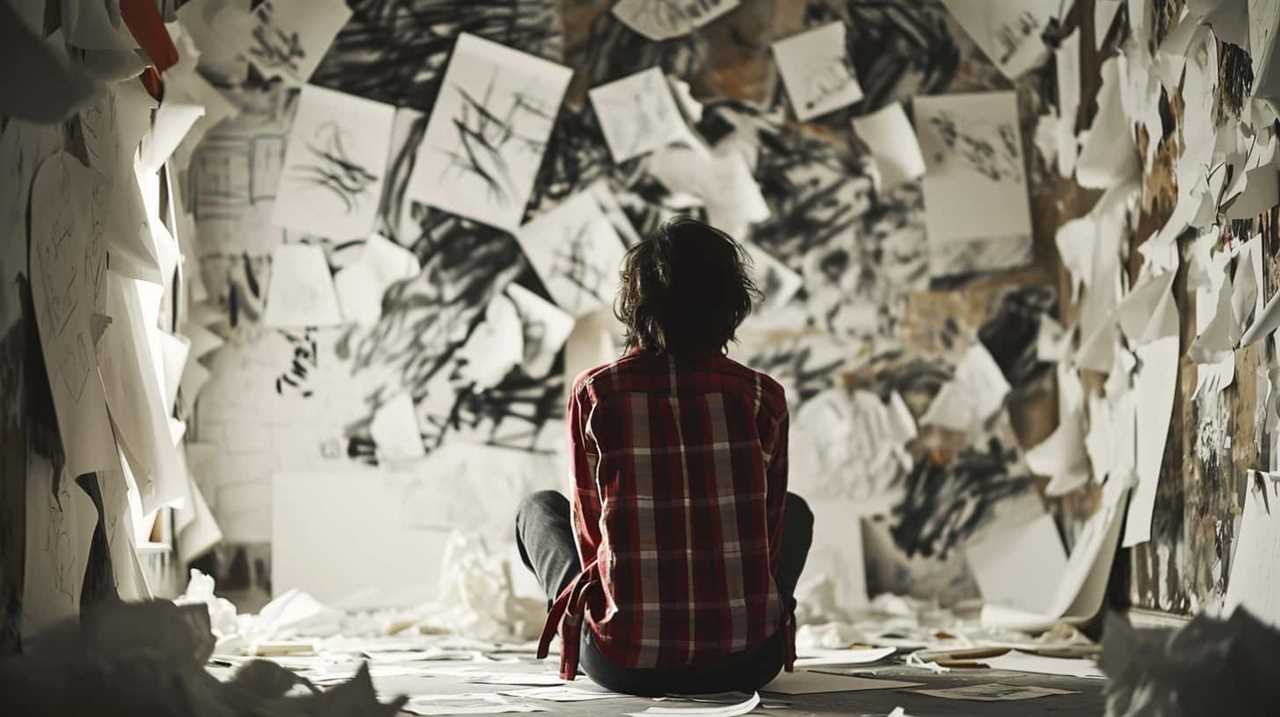
So, embrace these techniques, experiment with them, and let your imagination soar on the canvas.
Lauren’s talent in writing is matched by her passion for storytelling. Her love for books and deep understanding of culture and entertainment add a distinct flavor to her work. As our media and press contact, Lauren skillfully bridges the gap between afterQuotes and the broader media landscape, bringing our message to a wider audience.
Artists Quotations
Why Did Celebrated Artists Embrace Resilience? Their Quotes Revealed
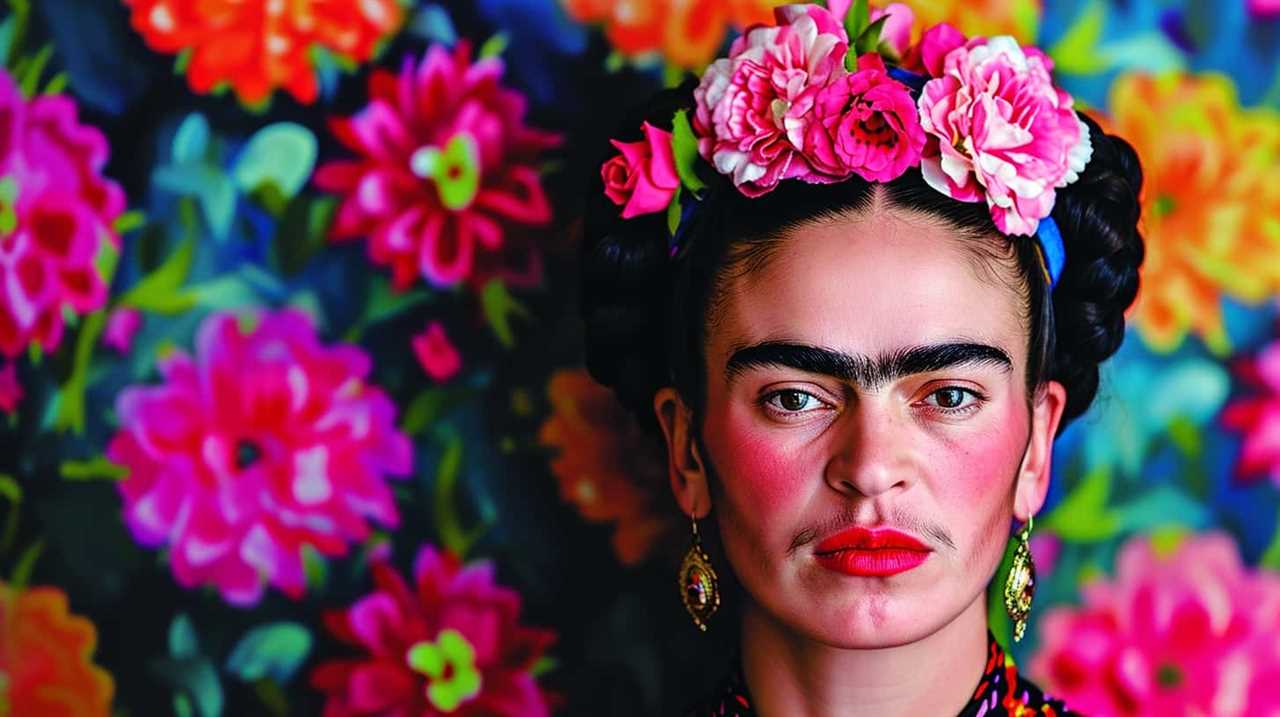
As we delve into the lives of renowned artists and their extraordinary perseverance, we reveal the underlying complexities of their creative paths. By examining their profound words, we achieve a deep comprehension of the reasons behind these artists’ decision to embody resilience in times of adversity.
Symbolizing their indomitable spirit and unwavering commitment to their craft, their words reveal the mastery they desired and the determination that propelled them forward. From Picasso’s perspective on overcoming obstacles to Frida Kahlo’s inner strength in art, and from Van Gogh’s unwavering determination amid adversity to Dali’s surreal resilience in his artistic journey, we delve into the minds of these renowned artists.
Join us as we uncover the secrets behind their enduring legacies and the inspiration they offer to those seeking their own artistic mastery.
Key Takeaways
- Artists like Picasso, Kahlo, Van Gogh, Dali, and O’Keeffe embraced resilience to overcome challenges in their artistic journeys.
- These artists believed in constant growth, adaptation, and pushing boundaries to evolve and transform their art.
- Their impact and influence on the art world is lasting, inspiring artists and art enthusiasts worldwide.
- Through their personal experiences, these artists found resilience in embracing pain, trauma, and societal norms, using art as a transformative power.
Picasso’s Perspective on Overcoming Challenges
In overcoming challenges, Picasso believed in embracing constant growth and adaptation. Throughout his career, Picasso’s artistic evolution was marked by a relentless pursuit of innovation and experimentation. He constantly pushed the boundaries of traditional art forms, challenging the status quo and redefining the possibilities of artistic expression.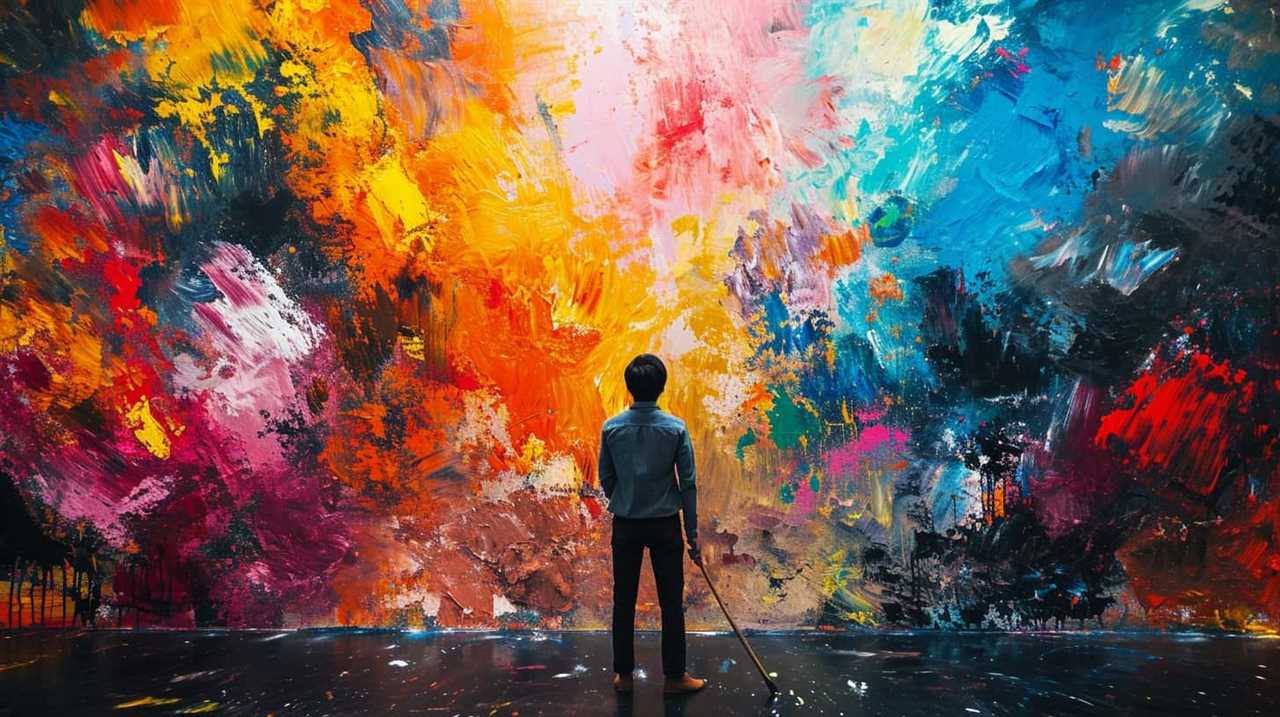
Picasso’s ability to adapt and evolve can be seen in his various artistic periods. From the Blue Period, characterized by melancholic and somber tones, to the Cubist movement, where he fragmented objects and depicted them from multiple perspectives, Picasso’s artistic style constantly evolved and transformed.
One of the key factors that influenced Picasso’s artistic evolution was his exposure to different cultures and art forms. His travels and interactions with artists from around the world opened his eyes to new techniques and perspectives, which he incorporated into his own work. Picasso was never afraid to embrace change, and he believed that it was through constant growth and adaptation that artists could truly reach their full potential.
In contrast to Picasso’s focus on artistic evolution, another renowned artist, Frida Kahlo, found solace and inspiration in her personal struggles. Kahlo’s art was deeply intertwined with her experiences of pain, physical ailments, and emotional turmoil. Through her art, she expressed her innermost emotions and confronted her personal demons.
Kahlo’s art served as a means of catharsis, allowing her to find healing and empowerment in the face of adversity. Her paintings often depicted her physical and emotional pain, as well as her Mexican heritage and cultural identity. Kahlo’s art resonated with many individuals who saw themselves reflected in her struggles and triumphs.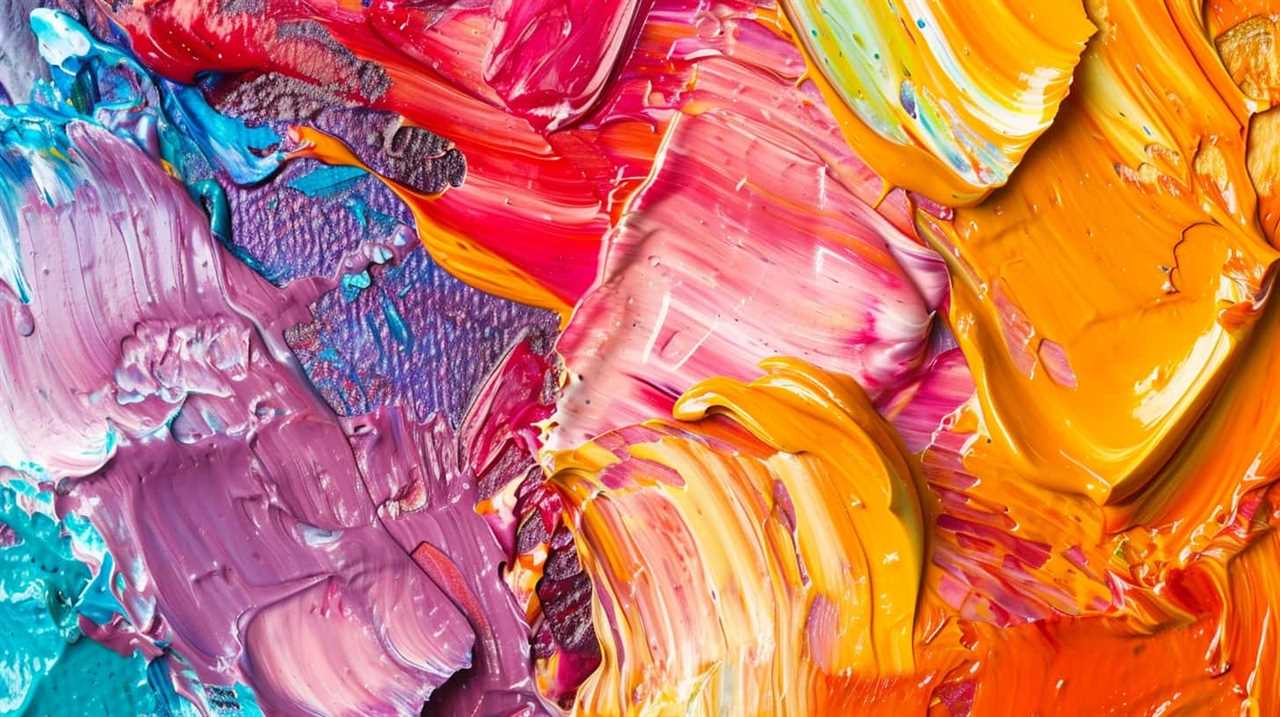
Both Picasso and Kahlo exemplify the power of art in overcoming challenges. While Picasso embraced constant growth and adaptation, Kahlo drew strength from her personal struggles. Their unique approaches demonstrate that there’s no one-size-fits-all method for overcoming obstacles. Instead, it’s through embracing our own experiences and utilizing our artistic abilities that we can find resilience and create meaningful works of art.
Frida Kahlo’s Inner Strength in Art
While Picasso focused on artistic evolution, Frida Kahlo, on the other hand, drew strength from her personal struggles in her art. Frida Kahlo’s artistic inspiration stemmed from the profound impact of pain in her life. Her paintings were a reflection of her innermost emotions and experiences, allowing her to find solace and resilience in her artwork.
Kahlo’s art was deeply influenced by the physical and emotional pain she endured throughout her life. From a young age, she suffered from a multitude of health issues, including polio and a near-fatal bus accident that left her with lifelong physical disabilities. These experiences shaped her perception of the world and became a central theme in her art.
Kahlo’s paintings often depicted her physical and emotional pain, presenting a raw and honest portrayal of her experiences. Through her art, she found a way to express her emotions and confront her struggles head-on. Her work served as a form of catharsis, allowing her to process her pain and transform it into something beautiful and meaningful.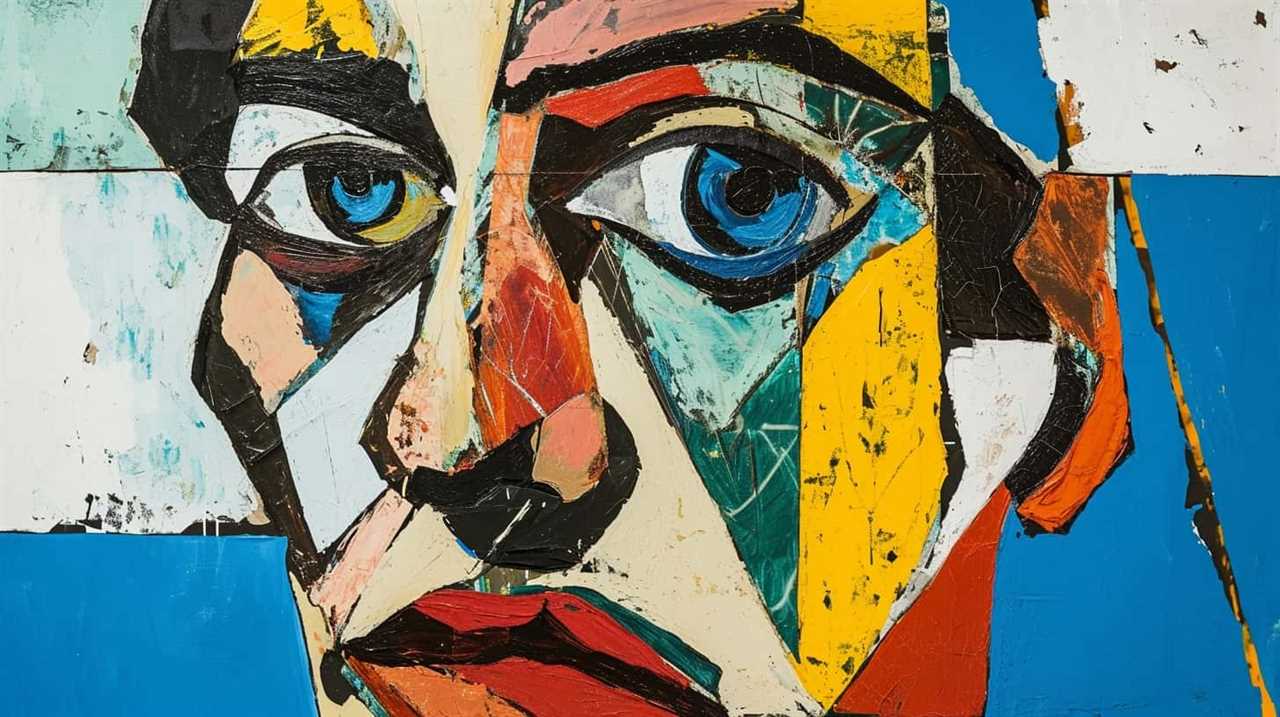
Van Gogh’s Determination Amid Adversity
Van Gogh’s determination to create art remained unwavering despite facing numerous adversities. His mental health struggles were well-documented, as he battled with depression, anxiety, and even episodes of psychosis. However, these challenges did not deter him from pursuing his artistic vision. In fact, it was during these difficult times that he produced some of his most iconic works, such as "Starry Night" and "The Potato Eaters."
| Van Gogh’s Mental Health Struggles | Picasso’s Artistic Evolution |
|---|---|
| Van Gogh’s mental health issues were a constant presence in his life, affecting both his personal well-being and artistic expression. | Picasso’s artistic evolution can be traced through different periods, each marked by distinct styles and subject matters. |
| Despite his struggles, Van Gogh used art as a form of therapy, pouring his emotions onto the canvas. His vibrant use of color and expressive brushwork reflected his inner turmoil. | Picasso’s early works were heavily influenced by the Blue and Rose periods, characterized by melancholic and introspective themes. Later, he embraced Cubism, revolutionizing the way art was perceived. |
| Van Gogh’s commitment to his craft was unwavering, even in the face of rejection and financial hardships. He continued to paint prolifically, producing over 2,000 artworks in just a decade. | Picasso’s artistic evolution was driven by a constant desire to push boundaries and challenge traditional artistic norms. His experimentation with different styles and mediums showcased his versatility and innovative spirit. |
| Van Gogh’s determination and resilience in the face of adversity continue to inspire artists and art enthusiasts worldwide. His ability to find solace and purpose in art serves as a testament to the transformative power of creativity. | Picasso’s artistic evolution serves as a reminder that artists are not bound by one style or subject matter. Instead, they have the freedom to explore and reinvent themselves, constantly pushing the boundaries of their own creativity. |
Van Gogh’s unwavering determination to create art, despite his mental health struggles, is a testament to his resilience and passion for his craft. His ability to find solace and purpose in art serves as an inspiration to artists and art enthusiasts worldwide. Similarly, Picasso’s artistic evolution showcases the transformative power of creativity and the freedom artists have to explore and reinvent themselves. Both artists remind us that even in the face of adversity, the pursuit of art can be a source of strength and growth.
Dali’s Surreal Resilience in Artistic Journey
Dali’s artistic determination and the enduring influence of surrealism are key points to consider when discussing his surreal resilience in his artistic journey.
Despite facing criticism and controversy, Dali remained steadfast in his commitment to pushing boundaries and challenging traditional artistic conventions.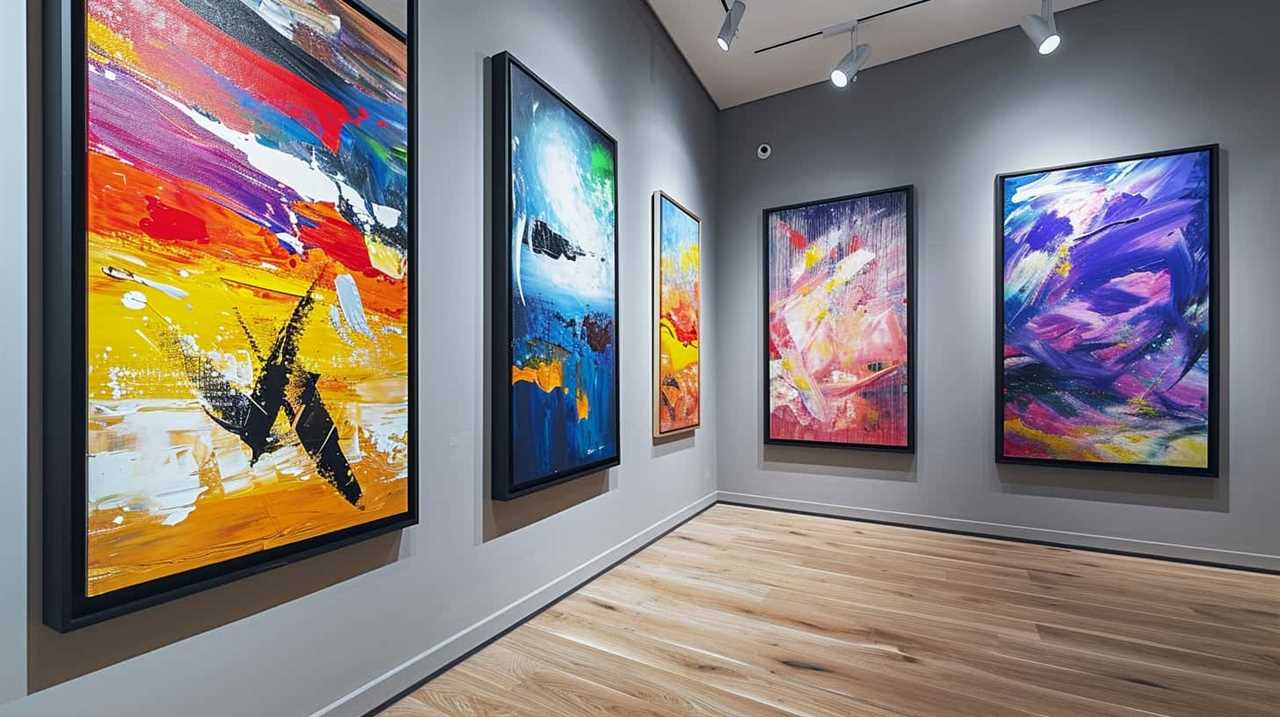
Surrealism, with its emphasis on the subconscious and irrational, continues to captivate audiences and inspire artists to this day.
Salvador’s Artistic Determination
We admire Salvador for his unwavering determination in his surreal artistic journey. His unique artistic style and impact on surrealism are testament to his resilience and unwavering dedication. Here are three aspects of Salvador’s artistic determination that stand out:
- Bold and imaginative imagery: Salvador’s artwork was characterized by dreamlike and bizarre imagery that pushed the boundaries of conventional art. His ability to create fantastical and unsettling scenes captivated audiences and challenged their perceptions of reality.
- Attention to detail: Despite the fantastical nature of his work, Salvador paid meticulous attention to detail. Every brushstroke and element in his paintings served a purpose, contributing to the overall composition and narrative.
- Persistence in the face of criticism: Salvador faced criticism and rejection throughout his career, yet he remained steadfast in his artistic vision. He defied societal norms and pushed the boundaries of art, refusing to conform to expectations.
Salvador’s determination to create art that was truly groundbreaking and thought-provoking continues to inspire artists and art enthusiasts alike.
Surrealism’s Enduring Influence
The enduring influence of surrealism can be seen in the resilience of celebrated artists like Salvador Dali throughout their artistic journeys.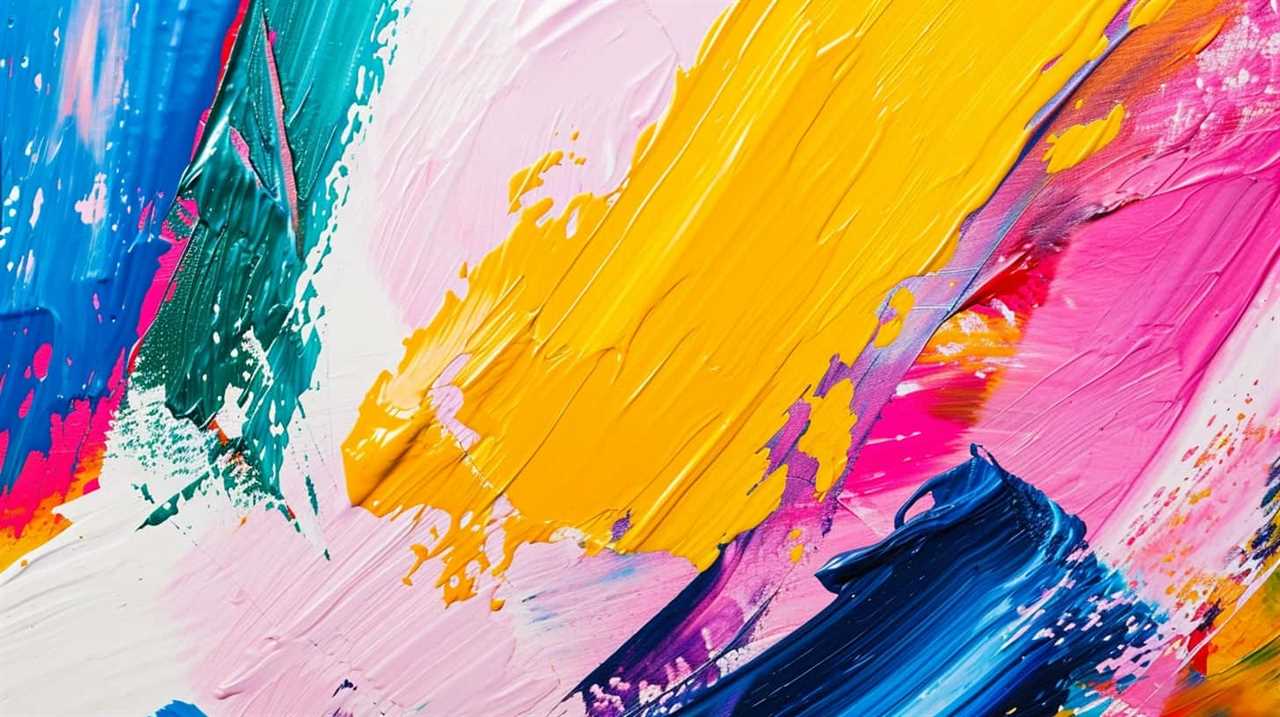
Surrealism, a movement that emerged in the early 20th century, has had a profound impact on contemporary art. Its exploration of the subconscious mind and its ability to create dreamlike and fantastical imagery continue to inspire artists today.
Dali, known for his iconic and often bizarre paintings, embraced the tenets of surrealism in his work. His ability to tap into the depths of the subconscious mind allowed him to create visually stunning and thought-provoking pieces.
Dali’s surreal resilience in his artistic journey demonstrates the lasting impact of surrealism on the art world, as well as its ability to push boundaries and challenge traditional artistic norms.
O’Keeffe’s Resilience in the Face of Criticism
O’Keeffe’s resilience in the face of criticism is evident in her enduring artistic vision and her ability to overcome artistic challenges.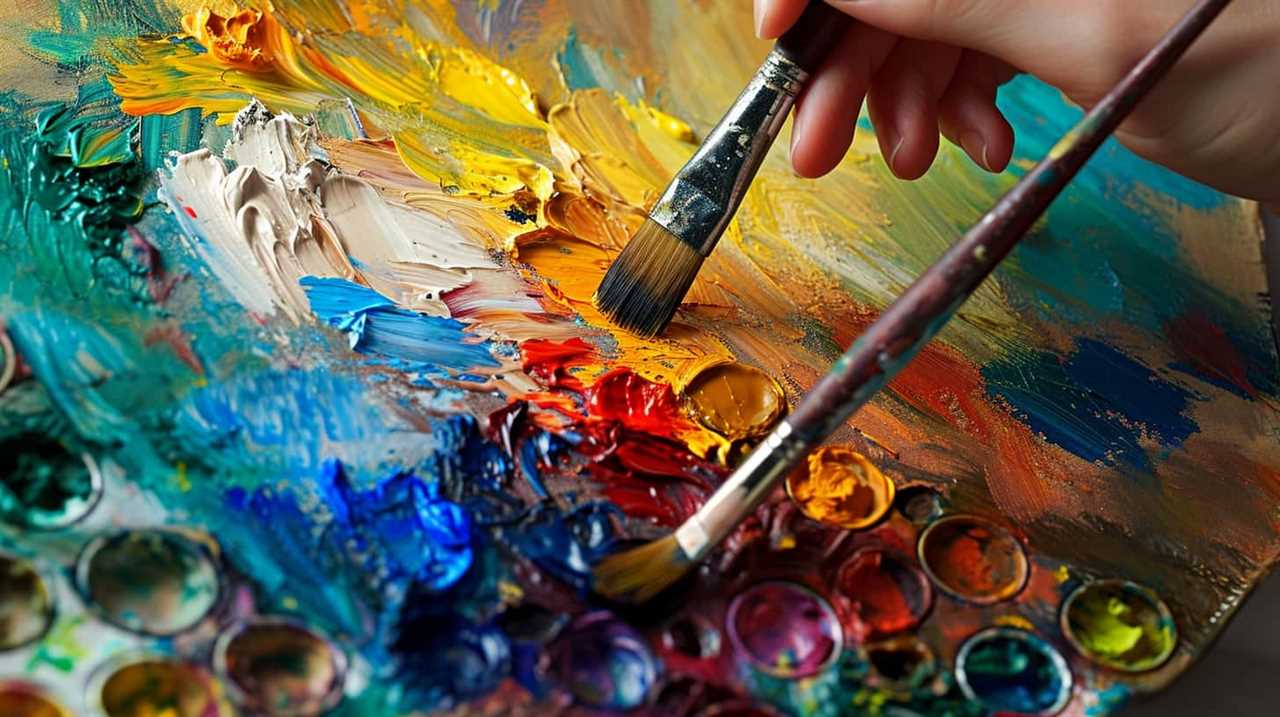
Despite facing criticism for her unique style and subject matter, O’Keeffe remained committed to her artistic vision, creating iconic works that have stood the test of time.
Through her determination and perseverance, she not only proved her critics wrong but also paved the way for future generations of artists to embrace their own unique voices.
O’keeffe’s Enduring Artistic Vision
Throughout her career, Georgia O’Keeffe consistently demonstrated her enduring artistic vision, despite facing criticism. Her ability to persevere and stay true to her artistic vision left an indelible mark on the art world and paved the way for future female artists.
O’Keeffe’s artistic legacy is defined by three key elements:
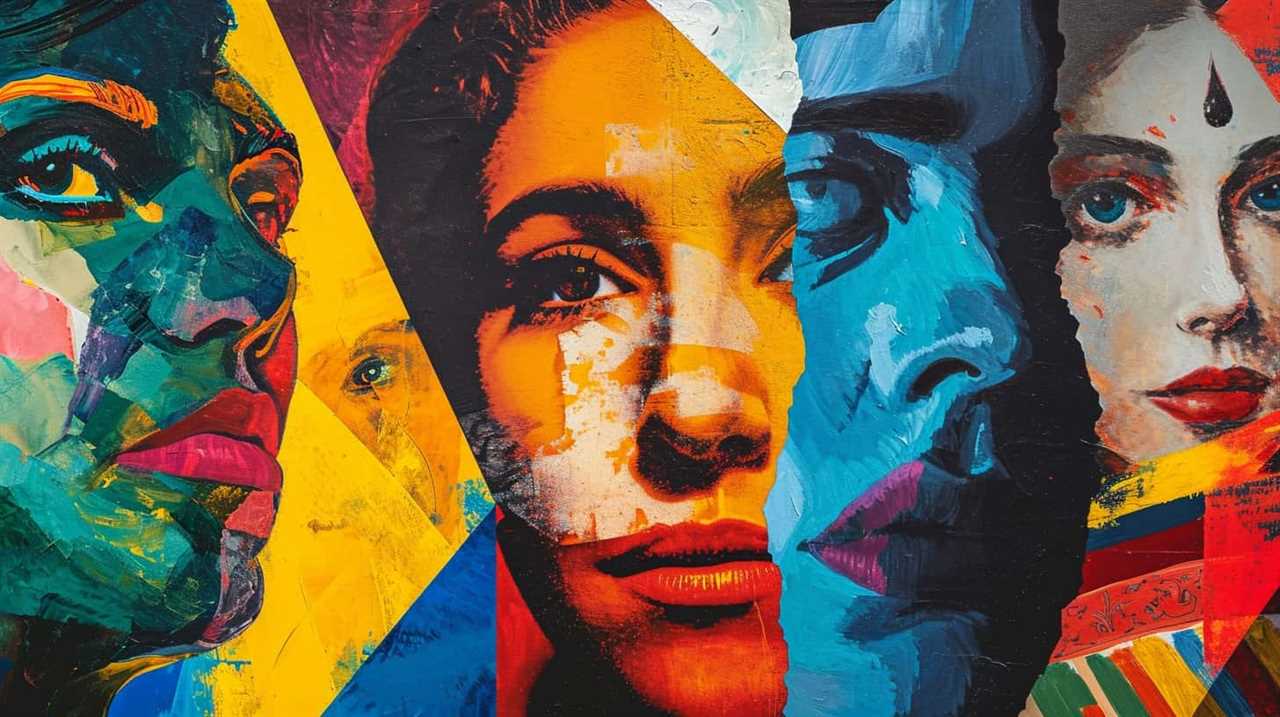
- Bold use of color: O’Keeffe’s vibrant and intense color palette captured the essence of her subjects, whether it was the delicate petals of a flower or the majestic landscapes of the Southwest. Her mastery of color allowed her to evoke emotions and create a sense of depth and dimension in her paintings.
- Unique perspective: O’Keeffe’s ability to see the extraordinary in the ordinary set her apart from her contemporaries. Whether it was zooming in on the intricate details of a flower or enlarging a landscape to fill the canvas, she brought a fresh and innovative perspective to her art.
- Symbolism and abstraction: O’Keeffe’s work often incorporated symbolism and abstraction, allowing viewers to interpret her paintings in their own unique way. By focusing on the essence of her subjects rather than their literal representation, she challenged traditional artistic conventions and opened up new possibilities for artistic expression.
Despite facing criticism and skepticism, O’Keeffe’s enduring artistic vision has had a profound impact on female artists, inspiring them to embrace their own unique perspectives and push boundaries in their work. Her unwavering dedication to her art serves as a reminder of the importance of resilience and staying true to one’s artistic vision.
Transitioning into the subsequent section about ‘overcoming artistic challenges’, it’s essential to explore how O’Keeffe’s resilience enabled her to overcome the obstacles that she encountered throughout her career.
Overcoming Artistic Challenges
In the face of criticism, we persevered and embraced resilience, overcoming artistic challenges.
O’Keeffe, a celebrated artist known for her unique and vibrant paintings, faced her fair share of obstacles throughout her career. Despite criticism from art critics and societal expectations, she remained committed to her artistic vision and found inspiration through adversity.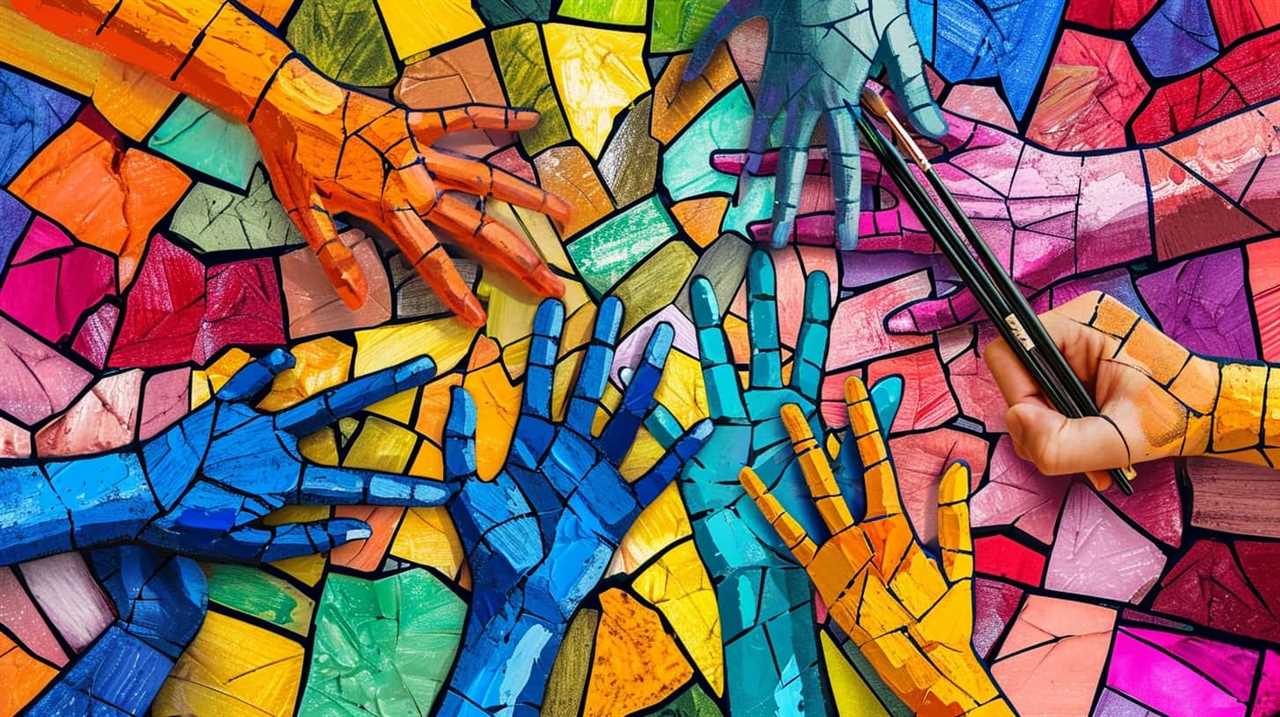
O’Keeffe’s ability to overcome creative obstacles and push through challenges is what set her apart as an artist. She once stated, ‘I have already settled it for myself, so flattery and criticism go down the same drain and I’m quite free.’ This quote exemplifies her resilience in the face of criticism, her unwavering belief in her art, and her ability to find motivation even in the most challenging times.
O’Keeffe serves as an inspiration for artists everywhere, reminding us to stay true to our artistic visions and persevere through adversity.
Basquiat’s Resilience in Breaking Barriers
Basquiat’s resilience in breaking barriers transformed the art world. His impact on contemporary art is undeniable, leaving behind a lasting legacy and influence that continues to resonate today. Here are three key aspects of Basquiat’s resilience that propelled him to break through the boundaries of the art world:
- Unconventional Expression: Basquiat’s artistic style challenged traditional norms and conventions. His use of bold colors, expressive brushstrokes, and incorporation of graffiti elements created a unique visual language that defied categorization. By embracing his individuality and refusing to conform, Basquiat paved the way for a new wave of artistic expression.
- Cultural Commentary: Basquiat’s art was deeply rooted in his experiences as a black artist in America. Through his work, he fearlessly tackled issues of race, identity, and societal injustices. By giving a voice to marginalized communities, Basquiat challenged the status quo and forced viewers to confront uncomfortable truths.
- Collaborative Spirit: Basquiat’s resilience wasn’t just evident in his solo work, but also in his collaborations. He often collaborated with other artists, musicians, and writers, blurring the boundaries between different art forms. This collaborative spirit not only expanded his artistic horizons but also fostered a sense of community and collective resilience within the art world.
In breaking barriers, Basquiat paved the way for a new era of artistic possibilities. His legacy and influence continue to inspire artists to embrace resilience and push the boundaries of creativity.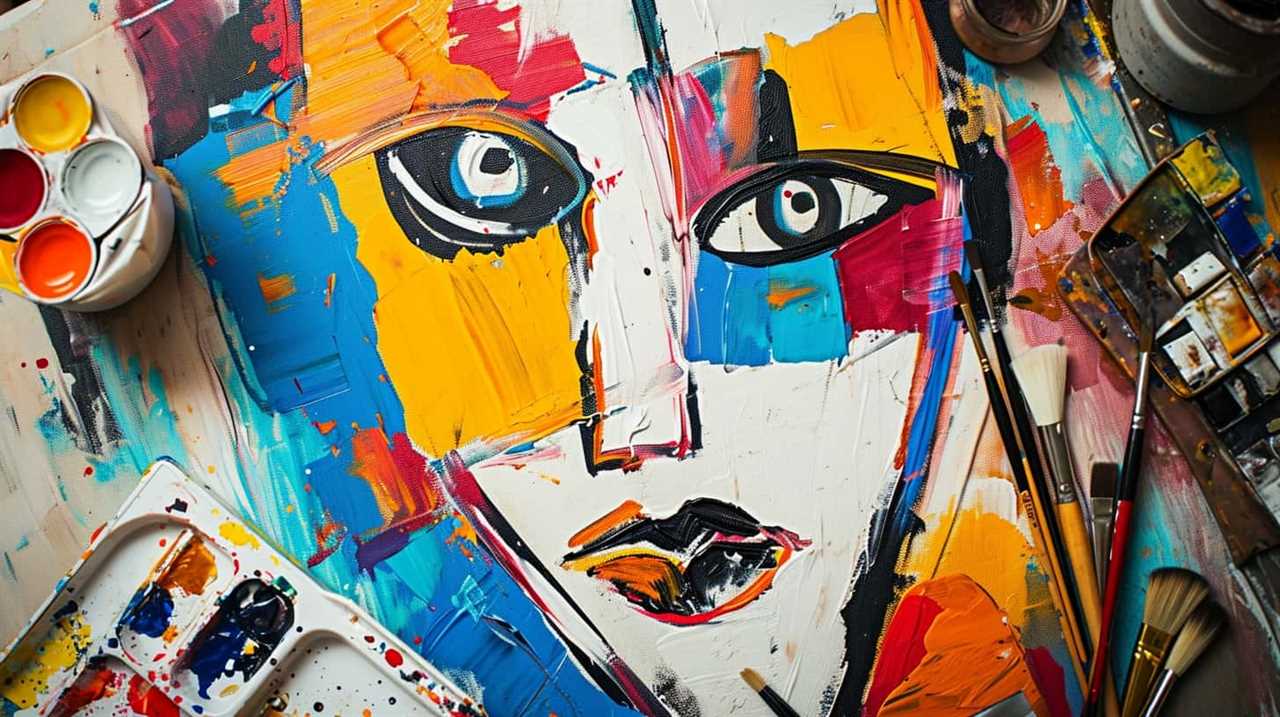
Kahlo’s Resilience in Embracing Pain
Kahlo’s unwavering embrace of her pain defined her artistic journey. Through her use of symbolism, she transformed her physical and emotional suffering into powerful works of art. Kahlo’s paintings are filled with symbols that represent her personal experiences and struggles, such as the broken column symbolizing her shattered spine and the thorny vines symbolizing her emotional turmoil. These symbols not only serve as a means of self-expression but also allow viewers to connect with her pain on a deeper level.
Kahlo’s resilience in embracing her pain has had a profound influence on contemporary artists. Many artists today continue to explore themes of pain, trauma, and resilience in their work, inspired by Kahlo’s ability to transform her own pain into art. Her bold and honest approach to depicting her physical and emotional suffering has challenged societal norms and paved the way for artists to address difficult and uncomfortable subjects.
Transitioning into the subsequent section about Warhol’s resilience in the pop art movement, it’s important to note that while Kahlo’s art focused on personal pain, Warhol’s resilience was manifested in his ability to challenge traditional notions of art and embrace popular culture.
Warhol’s Resilience in the Pop Art Movement
We admired Warhol’s resilience as he revolutionized the art world through his bold embrace of popular culture in the Pop Art movement. Warhol’s influence on pop culture can’t be overstated, as his iconic art style continues to inspire and captivate audiences to this day.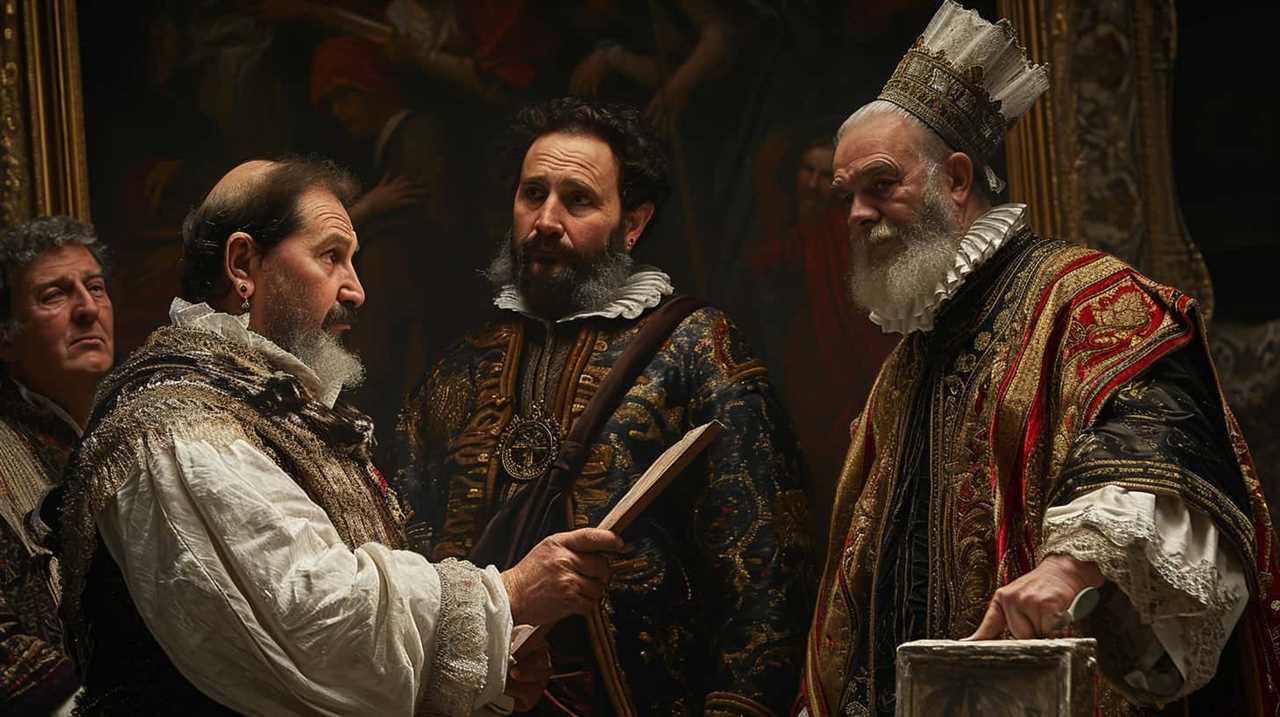
Here are three aspects of Warhol’s resilience that made him a trailblazer in the art world:
- Embracing mass production: Warhol challenged the traditional notion of art by incorporating everyday objects and images into his work. His use of screen printing techniques allowed him to produce multiple copies of his artworks, blurring the boundaries between high and low art.
- Celebrating consumerism: Warhol’s art celebrated the consumer culture of post-war America. Through his iconic images of Campbell’s soup cans, Coca-Cola bottles, and celebrities like Marilyn Monroe, he commented on the power of advertising and the commodification of popular culture.
- Embracing controversy: Warhol’s art often courted controversy and pushed boundaries. His provocative and sometimes controversial subjects challenged societal norms and forced viewers to confront uncomfortable truths about fame, consumerism, and the impact of mass media.
Warhol’s resilience in the face of criticism and his willingness to embrace new ideas and challenge the status quo cemented his place as one of the most influential artists of the 20th century.
Transitioning into the subsequent section about Monet’s resilience in capturing light and nature…
Monet’s Resilience in Capturing Light and Nature
Transitioning from Warhol’s resilience in the Pop Art movement, Monet’s resilience in capturing light and nature is equally remarkable. Monet, a French Impressionist painter, was known for his ability to beautifully depict the play of light and its effects on nature. His art was a reflection of his deep appreciation for capturing nature’s beauty and his artistic inspiration from light.
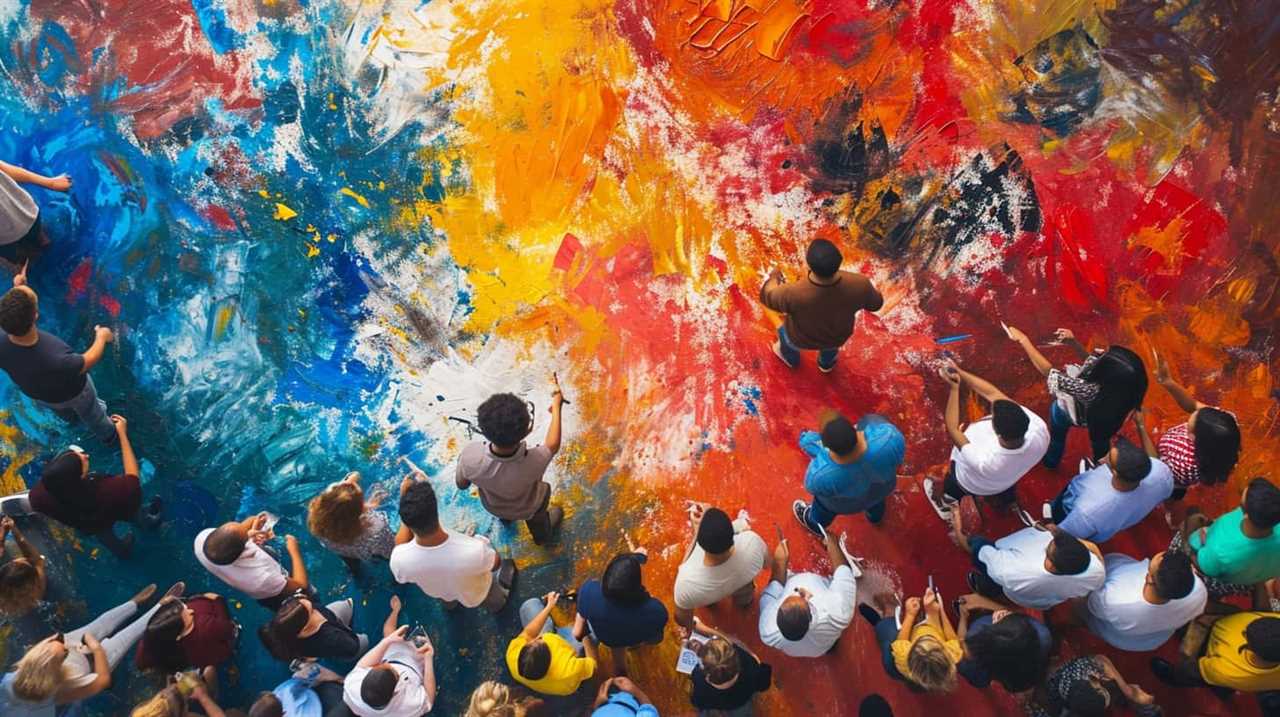
Monet’s paintings often featured landscapes, water lilies, and gardens, with an emphasis on the transient qualities of light. He would spend hours observing the changing colors and tones as the light shifted throughout the day. This meticulous attention to detail allowed him to create vivid and immersive scenes that transported viewers into the natural world.
To illustrate Monet’s incredible talent for capturing light and nature, let’s take a look at a table showcasing some of his most renowned works:
| Painting Title | Description |
|---|---|
| "Impression, Sunrise" | Depicts a hazy harbor scene with the sun rising |
| "Water Lilies" | Shows a serene pond with floating water lilies |
| "Haystacks" | Portrays haystacks at different times of the day |
Monet’s resilience in his artistic pursuit allowed him to create timeless masterpieces that continue to inspire and captivate audiences to this day. His ability to harness the power of light and convey the essence of nature through his brushstrokes is a testament to his unwavering dedication and artistic vision.
Frequently Asked Questions
How Did Picasso’s Perspective on Overcoming Challenges Influence His Artistic Style?
Picasso’s perspective on overcoming challenges greatly influenced his artistic style, leading to his artistic evolution and his immense influence on modern art. His ability to embrace resilience allowed him to experiment with different techniques and push the boundaries of traditional art.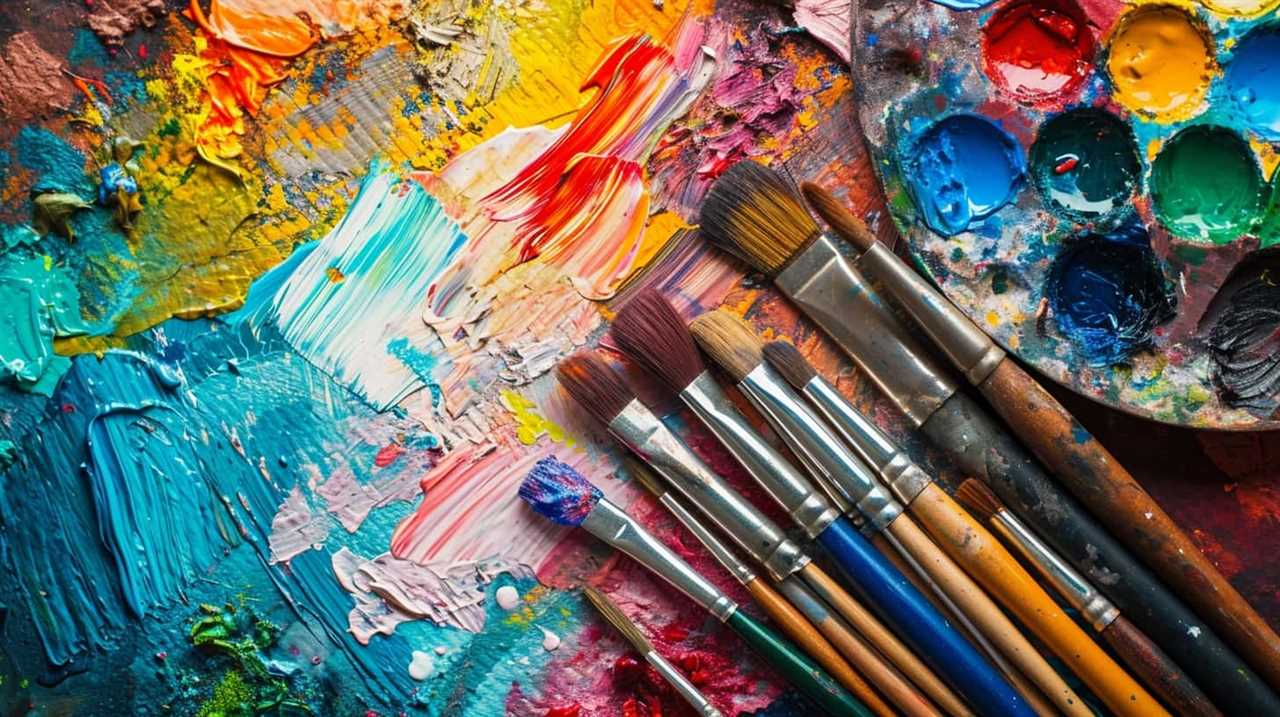
What Personal Experiences Contributed to Frida Kahlo’s Inner Strength in Her Artwork?
Frida Kahlo’s inner strength in her artwork was shaped by her personal experiences. These experiences, such as her physical and emotional pain, served as a source of inspiration and influenced contemporary artists who admire her resilience.
How Did Van Gogh’s Determination Help Him Overcome the Adversity He Faced in His Life and Career?
Van Gogh’s determination played a vital role in overcoming the adversity he faced in his life and career. Despite his struggles with mental health, he channeled his emotions into his artistic techniques, creating masterpieces that continue to inspire and resonate with audiences today.
In What Ways Did Dali’s Surreal Resilience Shape His Artistic Journey?
Dali’s surreal resilience played a significant role in shaping his artistic journey. His ability to embrace and overcome adversity allowed him to push the boundaries of traditional art, creating unique and thought-provoking works that continue to captivate audiences.
How Did O’keeffe’s Resilience in the Face of Criticism Impact Her Artistic Development and Success?
O’Keeffe’s resilience in the face of criticism greatly impacted her artistic development and success. By not letting negative feedback deter her, she was able to stay true to her artistic vision and push boundaries, ultimately achieving mastery in her craft.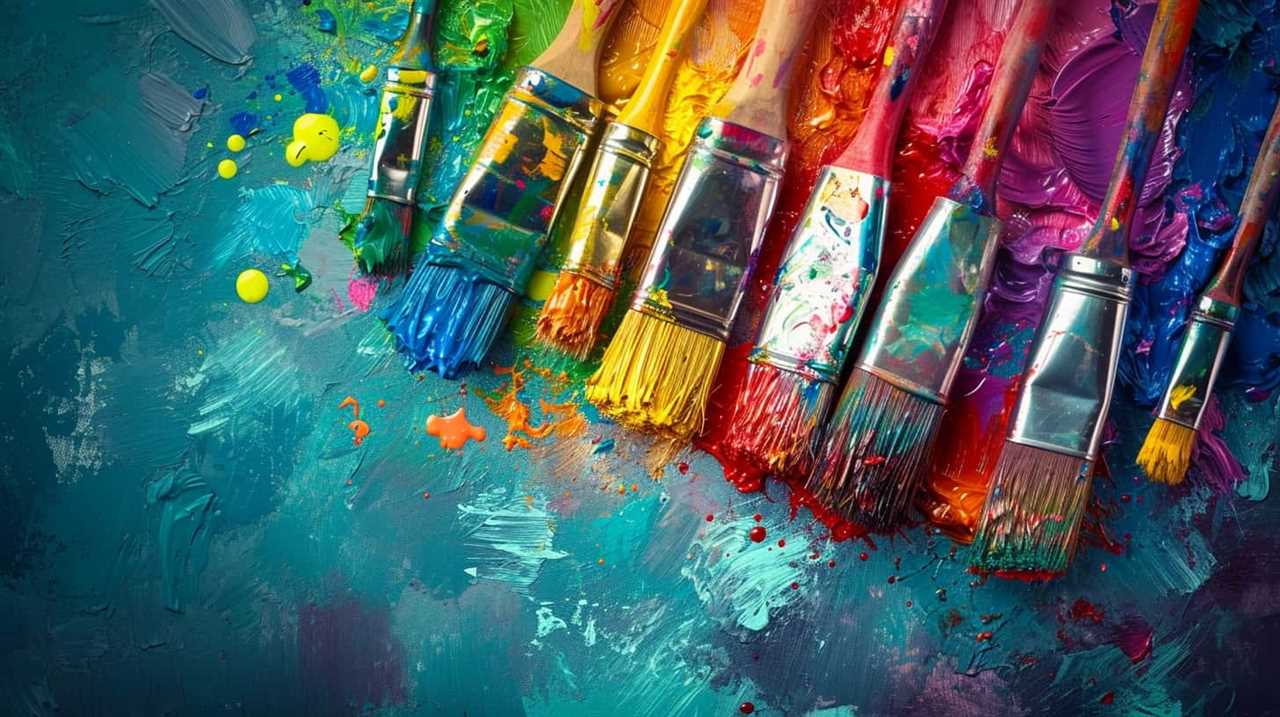
Conclusion
In conclusion, the celebrated artists discussed in this article demonstrate the power of resilience in the face of various challenges. Through their quotes and artistic journeys, Picasso, Kahlo, Van Gogh, Dali, O’Keeffe, Basquiat, Warhol, and Monet inspire us to embrace our own resilience.
As the adage goes, ‘What doesn’t kill you makes you stronger.’ These artists overcame adversity, criticism, and personal pain, ultimately leaving a lasting impact on the art world and reminding us of the strength that lies within us all.
Lauren’s talent in writing is matched by her passion for storytelling. Her love for books and deep understanding of culture and entertainment add a distinct flavor to her work. As our media and press contact, Lauren skillfully bridges the gap between afterQuotes and the broader media landscape, bringing our message to a wider audience.
Artists Quotations
3 Best Contemporary Painters’ Quotes on Creativity
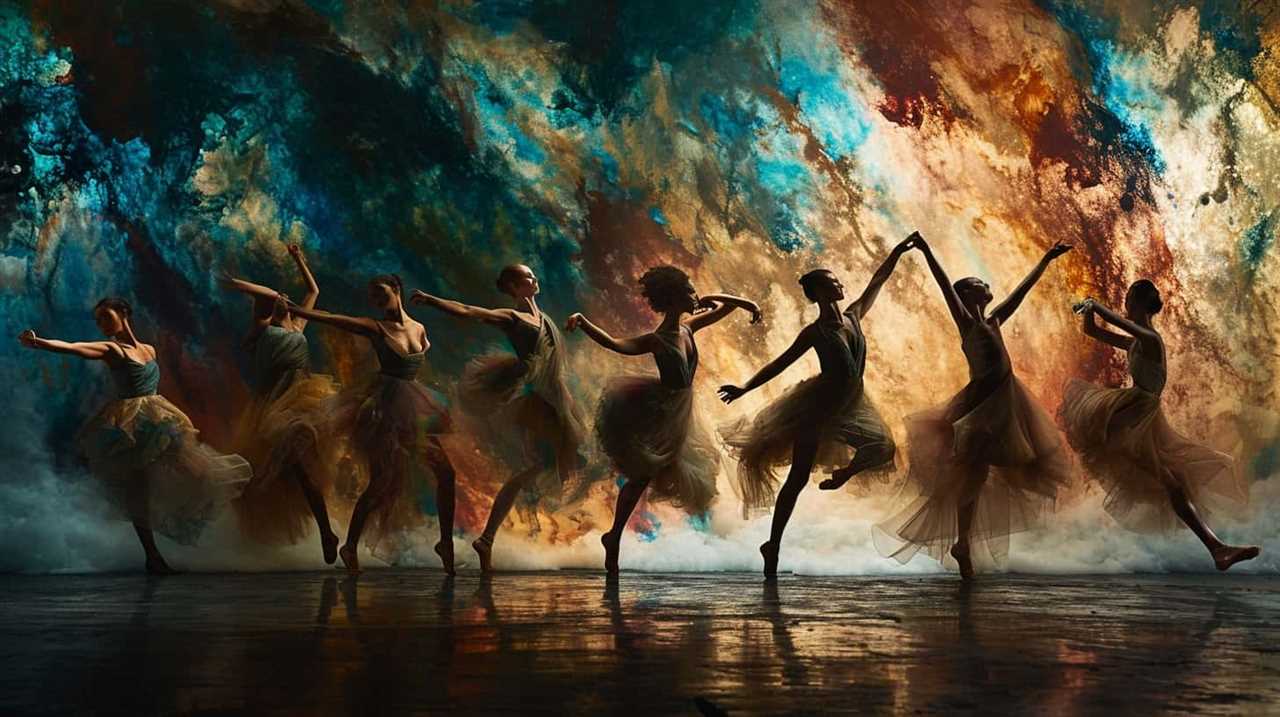
Ladies and gentlemen, I invite you to join me as we explore the creative worlds of the top three modern-day painters.
Their quotes on creativity will ignite the flames of inspiration within us all.
Pablo Picasso, a master of innovation, offers insightful words that delve deep into the realms of artistic brilliance.
Frida Kahlo, a symbol of resilience and self-expression, shares her inspirational quotes that resonate with our souls.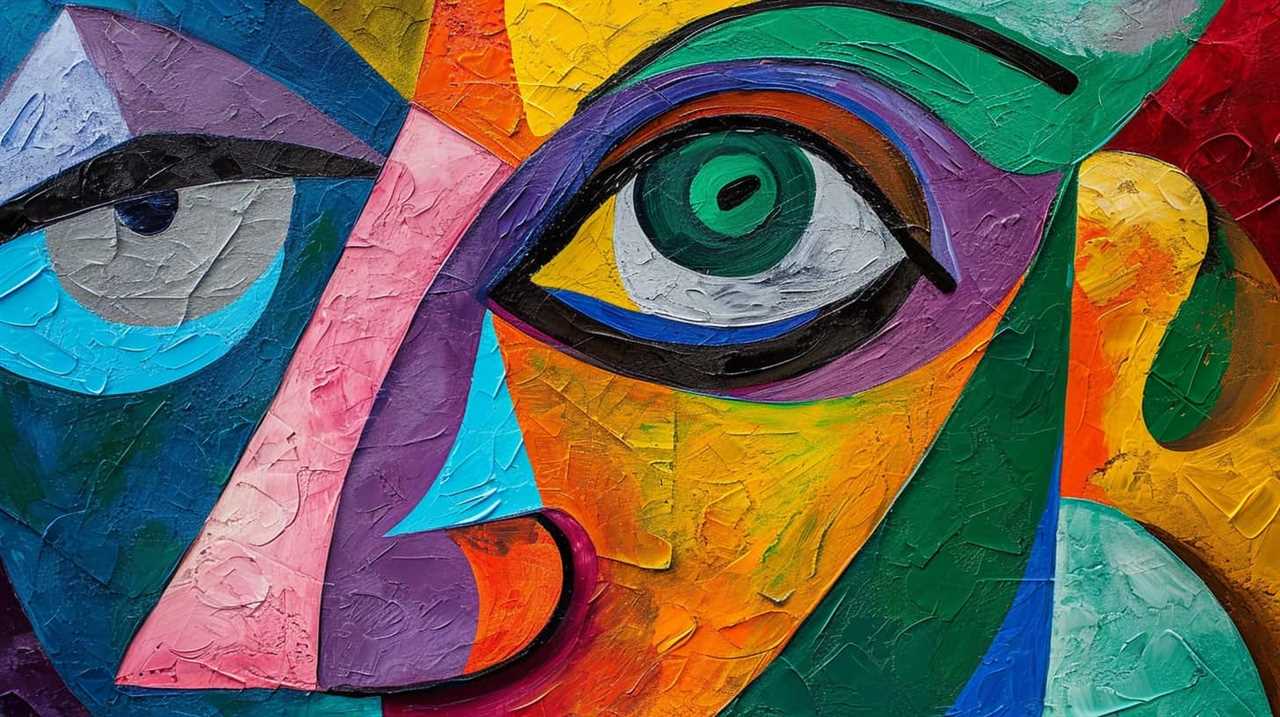
And Banksy, the enigmatic street artist, provokes our thoughts with his profound sayings on creativity and inspiration.
Together, these three painters weave a tapestry of wisdom, guiding us towards the mastery we seek.
Join us as we explore their captivating quotes and unlock the secrets of creativity.
Key Takeaways
- Picasso and Kahlo’s ability to fuse different styles and genres showcases their versatility in their artwork.
- Both Picasso and Kahlo inspired countless artists to explore new artistic possibilities and embrace their own unique perspectives.
- Banksy’s art served as a powerful tool for social commentary and inspired many artists to use their art as a means of activism.
- Picasso’s use of cubism and Kahlo’s emphasis on self-expression and authenticity in art challenged traditional notions of creativity and paved the way for new artistic movements.
Pablo Picasso’s Insightful Words on Creativity
One of our favorite insights on creativity comes from Pablo Picasso, who once said, ‘Every act of creation is first an act of destruction.’ Picasso’s words encapsulate the essence of his artistic techniques and his profound influence on modern art. Known for his innovative approach, Picasso revolutionized the art world with his bold experimentation and willingness to break traditional boundaries.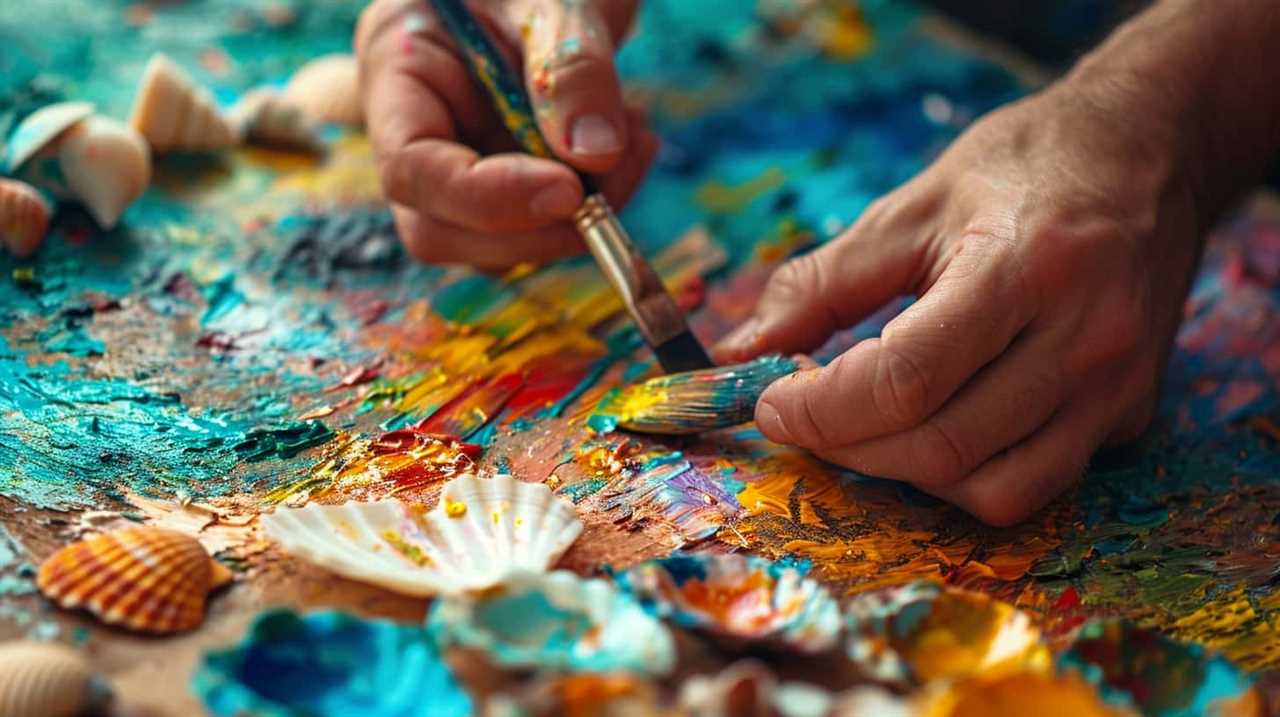
Picasso utilized various artistic techniques to challenge the status quo and push the boundaries of creativity. His use of cubism, for example, shattered the conventional notions of perspective and representation. By deconstructing objects and figures into geometric forms, Picasso aimed to depict multiple viewpoints simultaneously, adding a new dimension to the art world.
Moreover, Picasso’s influence on modern art is immeasurable. He not only inspired countless artists to explore new artistic possibilities but also paved the way for abstract expressionism and other avant-garde movements. His ability to fuse different styles and genres, whether it be African art, classical painting, or surrealism, showcased his versatility and forever changed the trajectory of art history.
Frida Kahlo’s Inspirational Quotes on Artistic Expression
In our exploration of ‘Best Contemporary Painters’ Quotes on Creativity’, we now turn our attention to the inspiring quotes on artistic expression by Frida Kahlo. Known for her vibrant and emotive artwork, Kahlo’s words offer a unique perspective on the power of art to convey emotions and tell stories.
- ‘I paint self-portraits because I’m so often alone, because I’m the person I know best.’
- ‘I paint flowers so they’ll not die.’
- ‘I am my own muse, I’m the subject I know best. The subject I want to know better.’
- ‘I paint my own reality. The only thing I know is that I paint because I need to, and I paint whatever passes through my head without any other consideration.’
- ‘I never painted dreams. I painted my own reality.’
In these quotes, Kahlo emphasizes the importance of self-expression and authenticity in art. She believed in using art as a means to explore her own experiences and emotions, often turning to self-portraits as a way to understand herself better.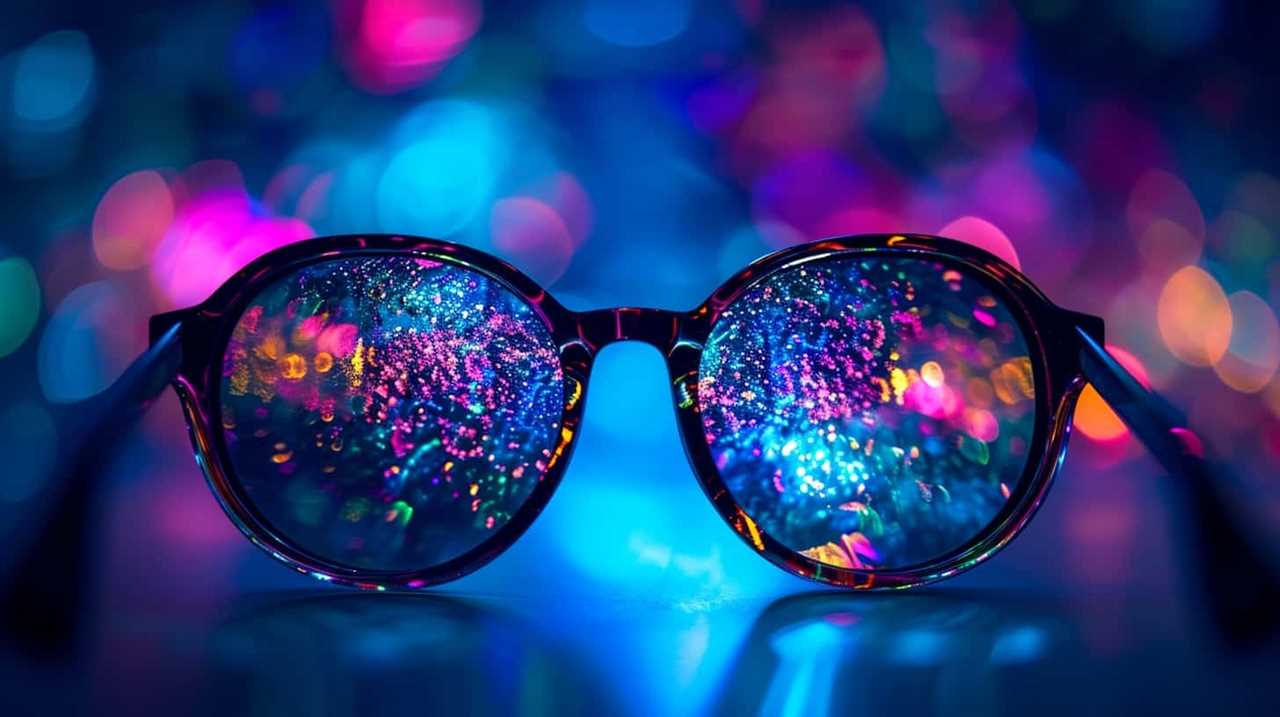
Kahlo’s words echo Salvador Dali’s surrealistic musings on the power of imagination and Vincent van Gogh’s profound reflections on the connection between art and emotion. Through her art and words, Kahlo invites us to embrace our own unique perspectives and to use art as a vehicle for self-discovery and expression.
Banksy’s Thought-Provoking Sayings on Creativity and Inspiration
Continuing our exploration of inspiring quotes on artistic expression, let’s now delve into Banksy’s thought-provoking sayings on creativity and inspiration.
Banksy, the elusive street artist whose true identity remains a mystery, has become a cultural phenomenon with his unique style and powerful messages. His influence on the art world is undeniable, as he’s brought street art into the mainstream and challenged traditional notions of creativity.
Banksy’s sayings on creativity and inspiration reflect his rebellious and subversive nature. He believes that art should be a means of questioning and challenging the status quo, rather than simply existing for decorative purposes. One of his most famous quotes, ‘Art should comfort the disturbed and disturb the comfortable,’ encapsulates his approach to art as a powerful tool for social commentary and change.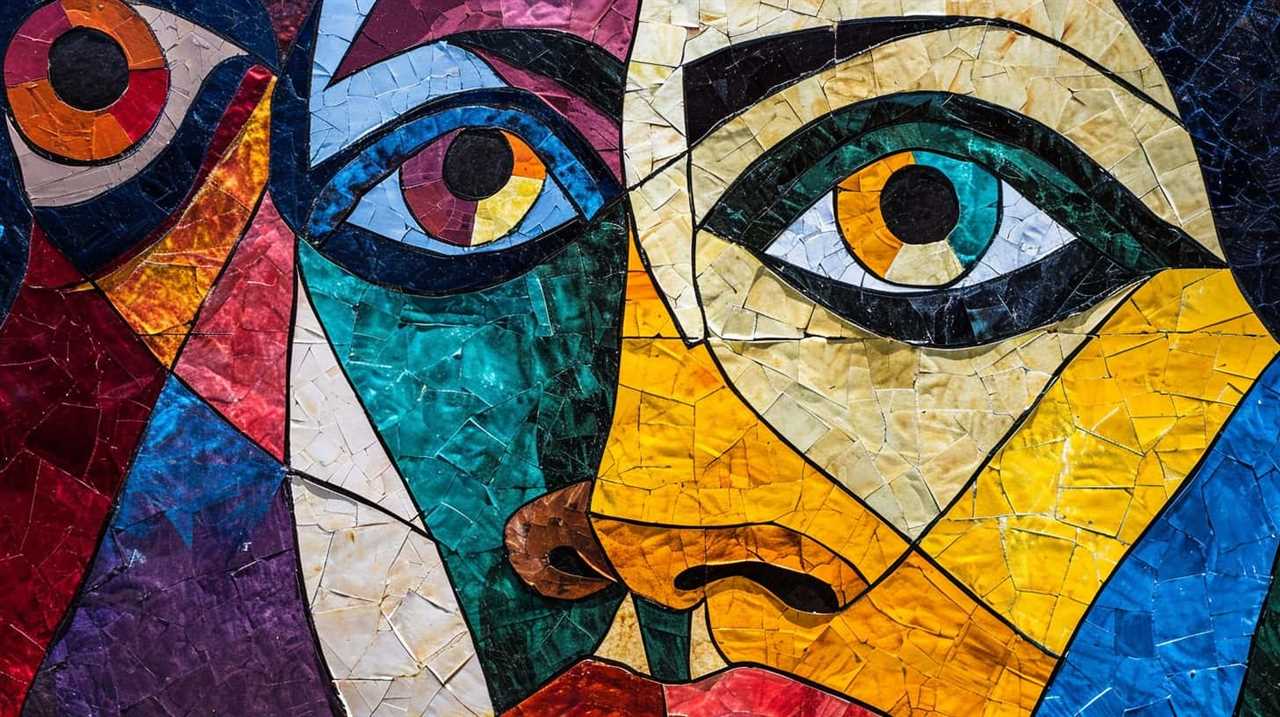
Through his stencils and murals, Banksy has sparked a street art revolution, transforming the urban landscape into a canvas for thought-provoking messages. His works often depict political and social issues, shedding light on injustices and inequalities in society. Banksy’s ability to combine creativity with a strong social conscience has made him a source of inspiration for many artists who seek to use their art as a means of activism.
Frequently Asked Questions
What Is the Significance of Pablo Picasso’s Blue Period in Relation to His Views on Creativity?
The significance of Picasso’s Blue Period lies in its exploration of human suffering and melancholy. This period reflects Picasso’s deep understanding of the emotional depths of creativity, as he sought to capture the essence of human experience through his art.
How Did Frida Kahlo’s Personal Experiences and Struggles Influence Her Artistic Expression?
Frida Kahlo’s impact and legacy can be traced back to her personal experiences and struggles, which deeply influenced her artistic expression. Her art became a powerful medium for conveying her emotions and exploring themes of identity, pain, and resilience.
What Are Some Examples of Banksy’s Thought-Provoking Artwork That Reflect His Quotes on Creativity and Inspiration?
Some examples of Banksy’s thought-provoking artwork that reflect his quotes on creativity and inspiration include his stencil of a girl with a heart-shaped balloon and his depiction of a protester throwing a bouquet of flowers. Frida Kahlo’s personal experiences and struggles influenced her artistic expression through her use of vibrant colors and symbolic imagery.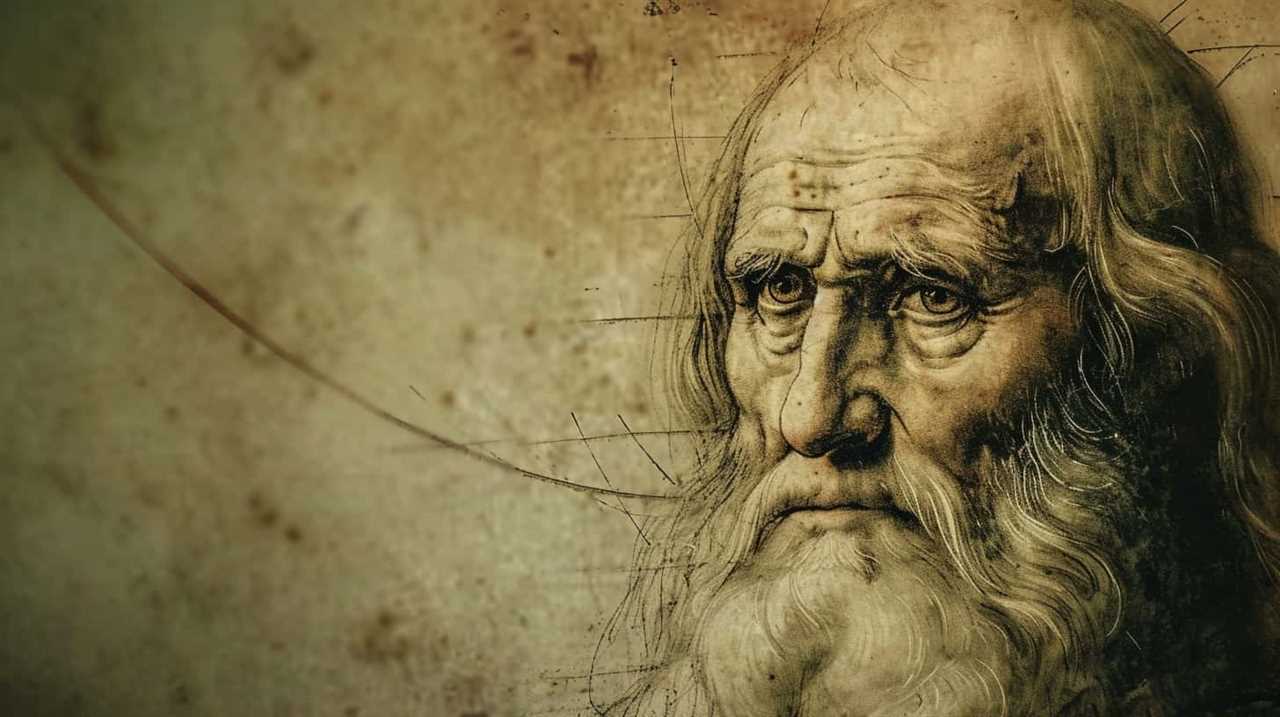
How Did Pablo Picasso’s Upbringing and Early Life Experiences Shape His Perspective on Creativity?
Pablo Picasso’s childhood influences and early art experiences played a significant role in shaping his perspective on creativity. These formative years shaped his unique artistic style and revolutionary approach to art, setting him apart as one of the most influential painters of the 20th century.
Can You Provide Specific Instances Where Frida Kahlo’s Quotes on Artistic Expression Have Influenced Other Contemporary Artists?
Frida Kahlo’s quotes on artistic expression have greatly influenced contemporary artists. Her interpretation of artistic expression, rooted in her personal struggles and experiences, has inspired a new generation to explore unique perspectives and push the boundaries of creativity.
Conclusion
In conclusion, the quotes from these contemporary painters provide insightful and inspirational perspectives on creativity.
Picasso’s words encourage us to embrace mistakes and take risks in our artistic endeavors.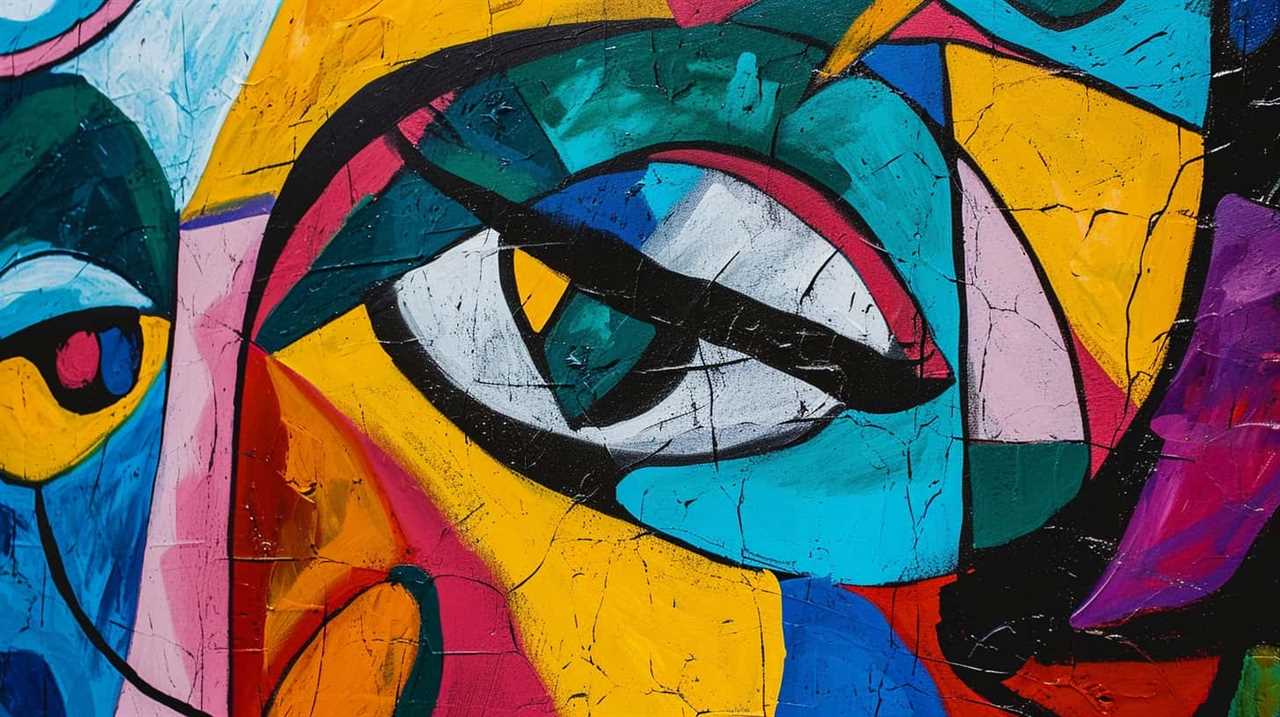
Kahlo’s quotes emphasize the importance of expressing our true selves through art.
And Banksy’s sayings provoke thought and inspire us to think outside the box.
These painters’ words serve as a reminder of the limitless possibilities and power of creativity, making them a must-read for any aspiring artist.
Lauren’s talent in writing is matched by her passion for storytelling. Her love for books and deep understanding of culture and entertainment add a distinct flavor to her work. As our media and press contact, Lauren skillfully bridges the gap between afterQuotes and the broader media landscape, bringing our message to a wider audience.
Artists Quotations
10 Best Quotes on Art’s Emotional Influence
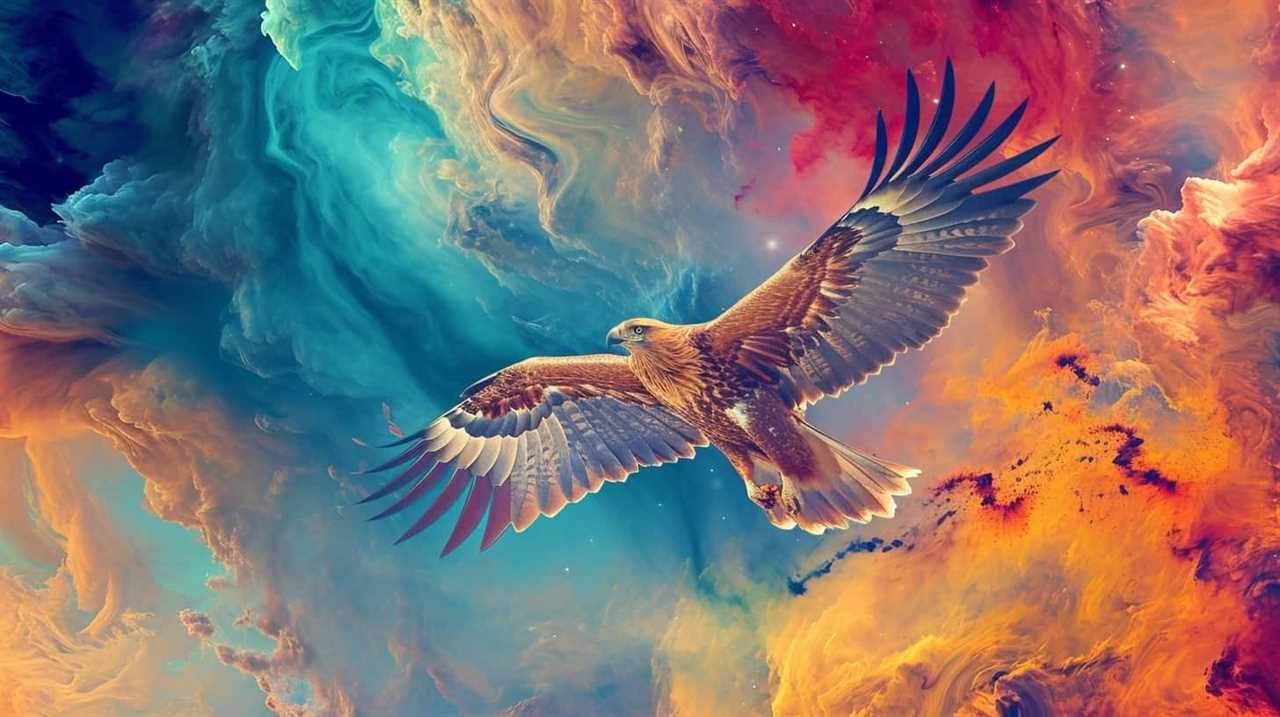
Art has a profound impact on our emotions, a truth that may not be apparent to all. It acts as a channel, guiding us through a variety of emotional landscapes, captivating and greatly impacting us.
In the world of art, emotions are not just depicted, but they are felt. Through the strokes of a brush or the notes of a melody, artists have the power to evoke deep emotions within us.
In this collection of the 10 best quotes on art’s emotional influence, we explore the transformative nature of art and its ability to stir our souls. Join us as we delve into the emotional resonance of art and discover the role it plays in expressing and capturing the essence of human emotion.
Key Takeaways
- Art evokes profound feelings and has the ability to touch our souls.
- Art therapy provides a safe space for emotional exploration and helps individuals gain insights into their thoughts and feelings.
- Art allows individuals to connect with their innermost emotions and bypasses the limitations of language.
- Art fosters empathy and understanding, creating a powerful tool for emotional expression and connection.
The Power of Art’s Emotional Impact
The power of art’s emotional impact is undeniable, as it moves us and evokes profound feelings within us. Art has the ability to touch our souls, to heal our emotional wounds, and to bring about a sense of calm and clarity. This is where art therapy comes into play.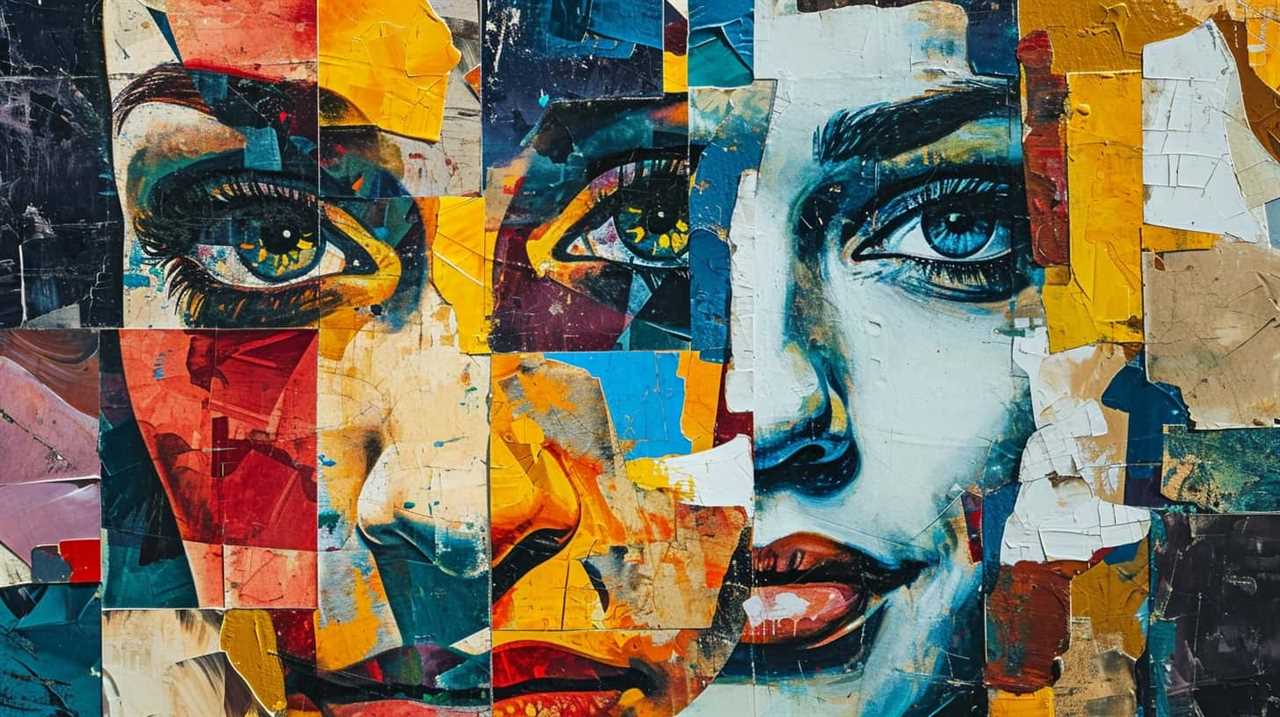
Art therapy is a form of therapy that uses the creative process of making art to improve a person’s mental, emotional, and physical well-being. It provides a safe space for individuals to explore their emotions, express themselves, and find healing through the act of creating art.
Art has been used as a tool for emotional healing for centuries. It allows individuals to externalize their internal struggles, giving them a tangible representation of their emotions. Through the process of creating art, individuals can gain insights into their own thoughts and feelings, leading to a greater understanding of themselves and their experiences. This self-reflection and self-expression can be cathartic and therapeutic, helping individuals to release pent-up emotions and find relief from emotional pain.
Art therapy is particularly effective for individuals who may struggle to verbalize their emotions. By engaging in the creative process, individuals can bypass the need for words and communicate their innermost feelings through visual imagery. This can be especially helpful for individuals who’ve experienced trauma or who find it difficult to express themselves verbally.
In addition to providing an outlet for emotional expression, art therapy also offers a sense of control and empowerment. Individuals can choose the colors, materials, and techniques they use in their artwork, giving them a sense of agency over their own healing process. This sense of control can be incredibly empowering and can help individuals to regain a sense of autonomy and self-confidence.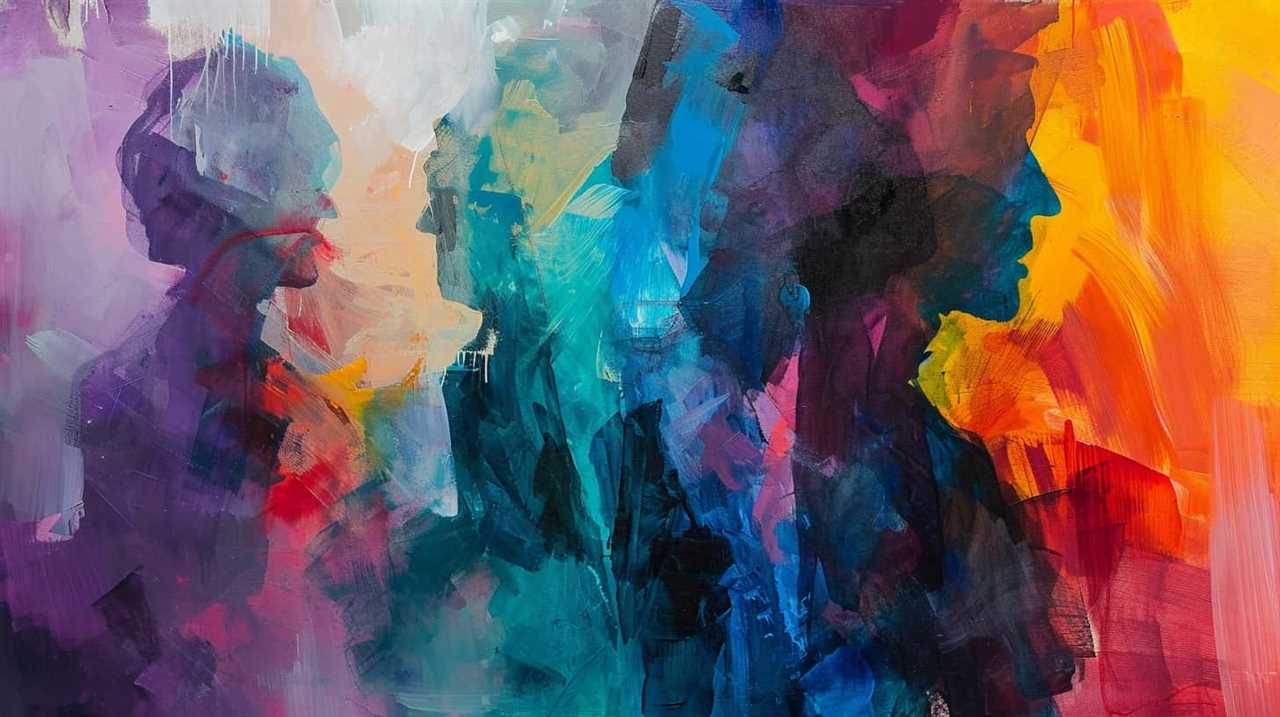
Art as a Gateway to the Soul
Through art therapy, we’ve experienced how art serves as a transformative gateway, allowing us to delve deep into the essence of our souls and connect with our innermost emotions. Art therapy, a form of psychotherapy that utilizes the creative process of making art, has been proven to be a powerful tool for emotional healing. It provides a safe space for individuals to express and explore their feelings, often leading to profound insights and personal growth.
Art has the ability to bypass the limitations of language and tap into the subconscious mind. It allows us to communicate and process emotions that may be difficult to express verbally. The act of creating art itself can be therapeutic, as it engages both the mind and the body, promoting relaxation and stress reduction.
In art therapy sessions, a variety of art materials and techniques are used to facilitate self-expression and reflection. This can include painting, drawing, sculpting, and even digital art. The process of creating art allows individuals to externalize their internal experiences, making them more tangible and easier to process. It also provides a sense of control and empowerment, as individuals can manipulate and transform their artwork as they see fit.
Art therapy has been shown to be effective in a wide range of populations, including children, adolescents, and adults. It has been used to address various emotional issues, such as trauma, grief, anxiety, and depression. The transformative power of art therapy lies in its ability to tap into the inherent creativity within each individual, allowing them to access their innermost thoughts and emotions.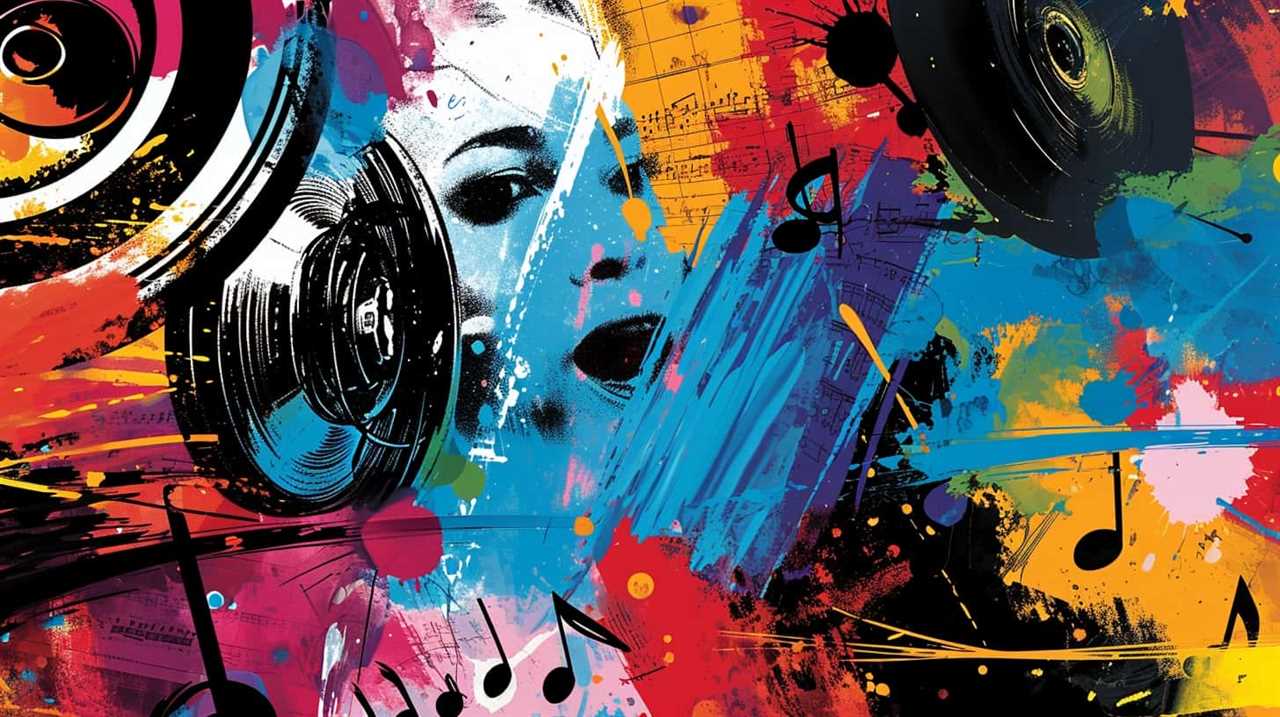
As we explore the topic of ‘Art as a Gateway to the Soul’, we’ll now delve deeper into the ways in which art has the capacity to evoke deep emotions and facilitate profound introspection.
Evoking Deep Emotions Through Art
When it comes to art’s ability to evoke deep emotions, one can’t overlook the power of empathy.
Art has a unique way of allowing us to connect with the experiences and emotions of others, creating a bridge that transcends time, culture, and language.
Through the emotional impact of art, we’re able to tap into a vast range of feelings, from joy and love to sadness and despair.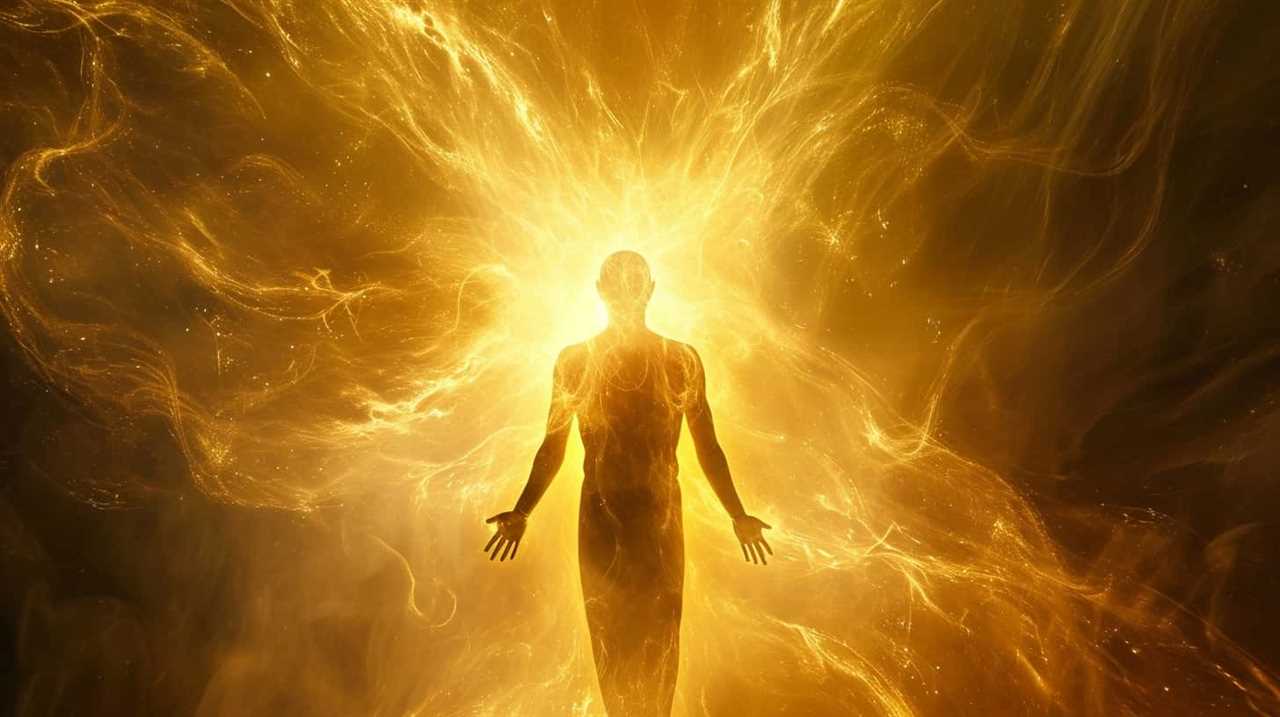
It’s through this connection and expression that art becomes a powerful tool for evoking deep and meaningful emotions within us.
Art and Empathy
Art has the power to evoke deep emotions and foster empathy in us. Through the emotional connection we feel with a piece of art, we are able to tap into our own experiences and understand the emotions of others. This ability to empathize is particularly evident in the field of art therapy, where individuals use art as a means of expressing and processing their emotions.
| Art and Empathy | |
|---|---|
| Art Therapy | Emotional Connection |
| – Utilizes art as a form of therapy to promote healing and self-expression. | – Allows individuals to connect with the emotions depicted in a piece of art. |
| – Provides a safe and non-verbal outlet for individuals to explore their emotions. | – Encourages empathy by fostering an understanding of others’ experiences and emotions. |
| – Enhances emotional awareness and promotes personal growth and healing. | – Strengthens the emotional bond between the artist and the viewer. |
Art has the unique ability to transcend language and cultural barriers, allowing us to connect with others on a deeper level. It provides a platform for expressing complex emotions that may be difficult to articulate verbally. By engaging with art, we expand our capacity for empathy and gain a deeper understanding of the human experience.
Emotional Impact of Art
We are deeply moved by the profound emotional impact that art has on us. Art has the power to evoke deep emotions within us, creating a strong emotional connection that transcends words.
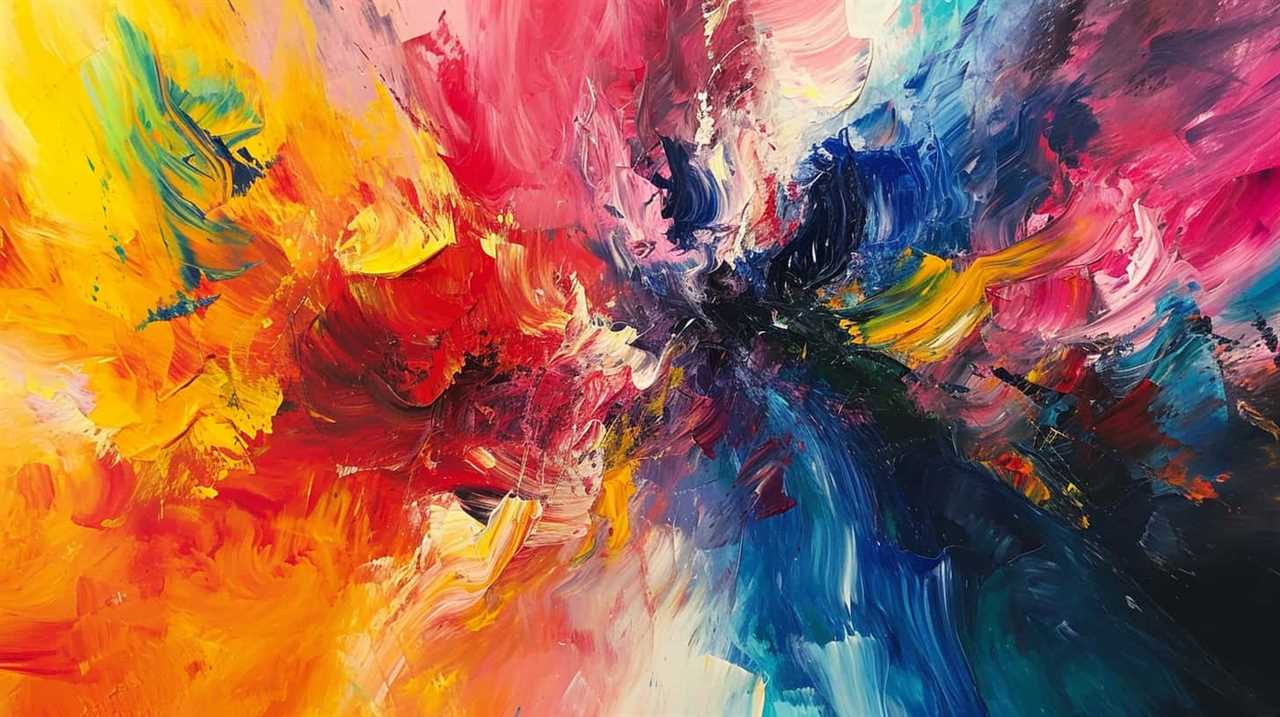
Whether it’s a painting, a sculpture, or a piece of music, art has the ability to stir something within us, to make us feel and experience emotions in a way that nothing else can. This emotional connection is what makes art such a powerful and transformative experience.
In fact, art has been recognized for its therapeutic benefits, as it can help us process and express our own emotions, providing a sense of catharsis and healing. Through art, we’re able to tap into our innermost thoughts and feelings, allowing us to better understand ourselves and the world around us.
Connecting Through Artistic Expression
The profound emotional impact that art has on us continues to be amplified through our ability to connect with others through artistic expression. Art has the power to transcend language barriers and cultural differences, allowing us to communicate and understand one another on a deeper level.
Through art, we can establish an expressive connection with others, sharing our emotions, thoughts, and experiences in a way that words alone can’t convey. Artistic expression serves as a universal language, enabling us to foster empathy, compassion, and understanding amongst individuals from diverse backgrounds.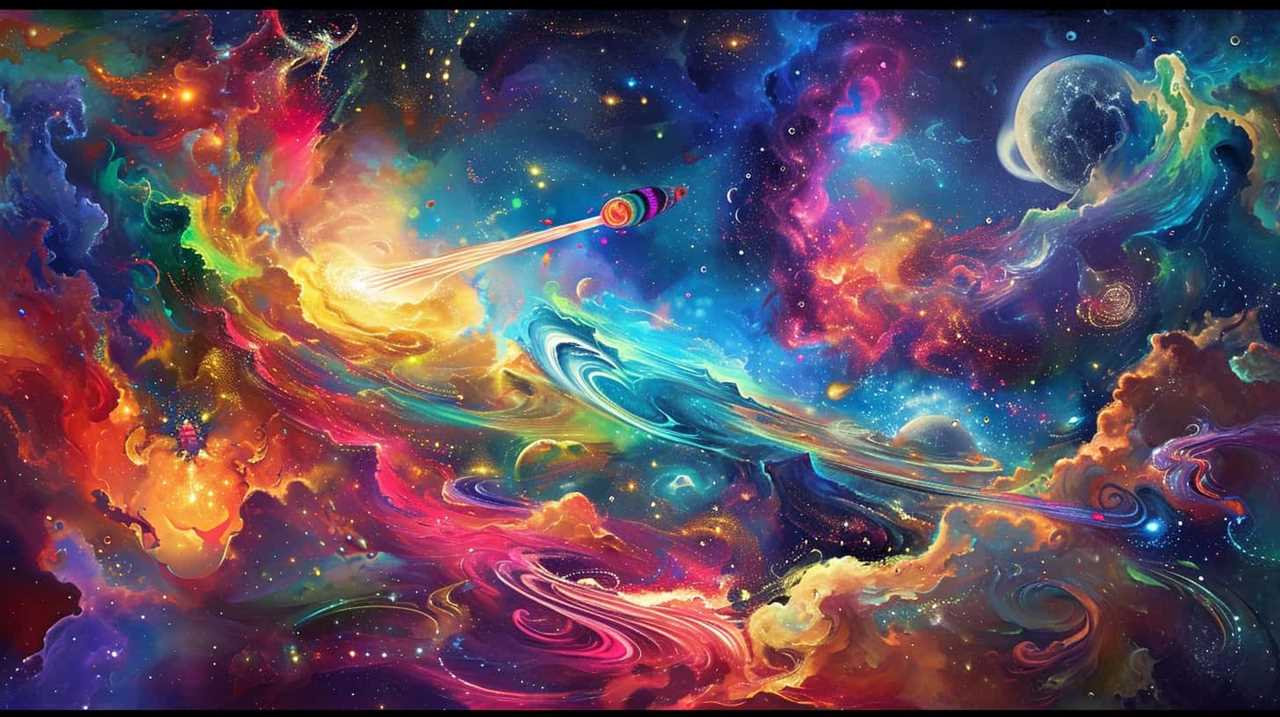
Whether it’s through visual art, music, dance, or literature, art has the ability to evoke deep emotions and tell powerful stories. It provides a platform for emotional storytelling and fosters a sense of unity among humanity.
The Transformative Nature of Art
As we explore the emotional influence of art, it becomes evident that the transformative nature of this creative expression is undeniably powerful. Art has long been recognized for its ability to heal and provide therapeutic benefits to individuals. The healing power of art lies in its ability to tap into our emotions, allowing us to express and process our innermost thoughts and feelings. Whether it’s through painting, sculpture, music, or dance, art provides a safe and non-verbal outlet for self-expression.
Art as a form of therapy has been used for centuries to help individuals cope with various emotional and psychological challenges. Through the process of creating art, individuals are able to externalize their internal struggles and gain a deeper understanding of themselves. This process can be cathartic, helping to release pent-up emotions and providing a sense of relief and liberation.
Moreover, art can also serve as a catalyst for personal growth and transformation. By engaging with art, we’re exposed to new ideas, perspectives, and emotions that can challenge our existing beliefs and expand our understanding of the world. Art has the power to inspire, motivate, and transform us, pushing us to explore our own creativity and potential.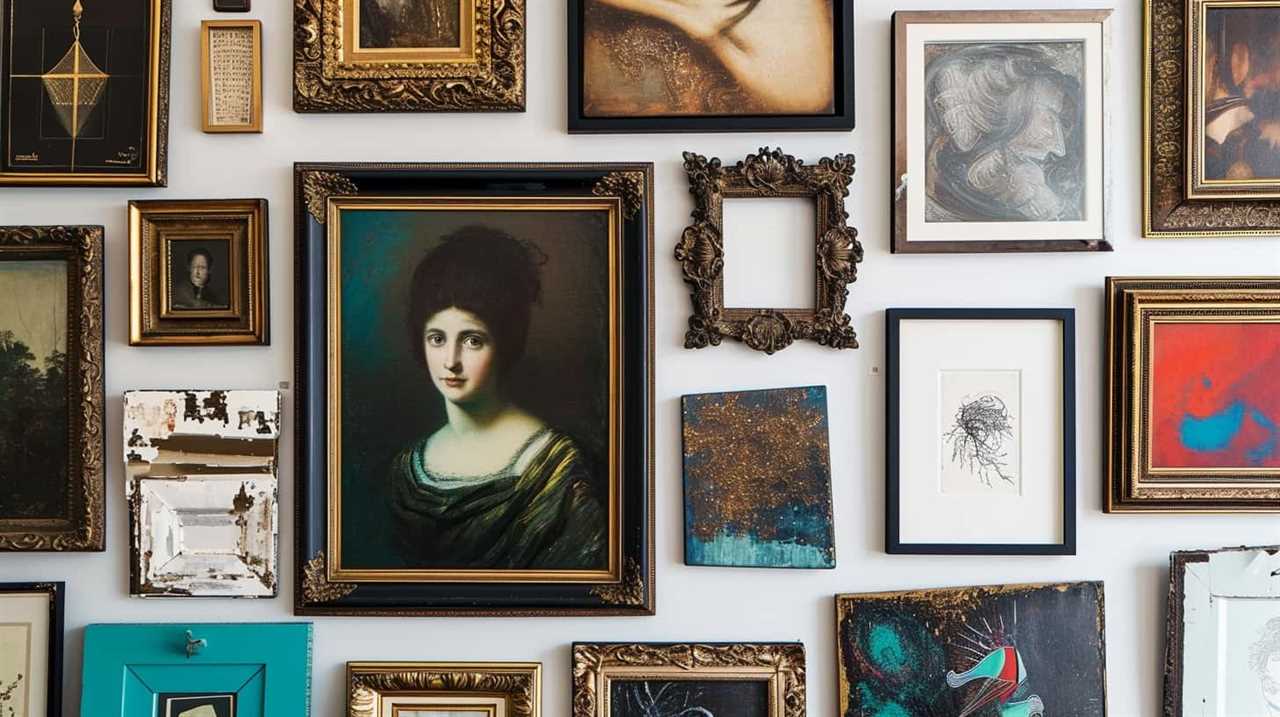
Art’s Ability to Stir Emotions
Art has the power to evoke deep emotions within us. It has the ability to touch our souls, provoke thought, and stir intense feelings. Whether it’s a painting, a sculpture, or a piece of music, art has the potential to elicit a wide range of emotions, from joy and awe to sadness and anger.
One way in which art stirs emotions is through its therapeutic effects. Art therapy, for example, utilizes various art forms to help individuals express and process their emotions. By engaging in artistic activities, individuals can tap into their innermost feelings and gain insight into their emotional state.
Another way art stirs emotions is through emotional catharsis. When we view a powerful piece of art, it has the ability to release pent-up emotions and provide a sense of relief. It allows us to connect with our own emotions and experiences, and provides a safe space for us to explore and confront our innermost thoughts and feelings.
To further illustrate the profound emotional impact of art, consider the following table: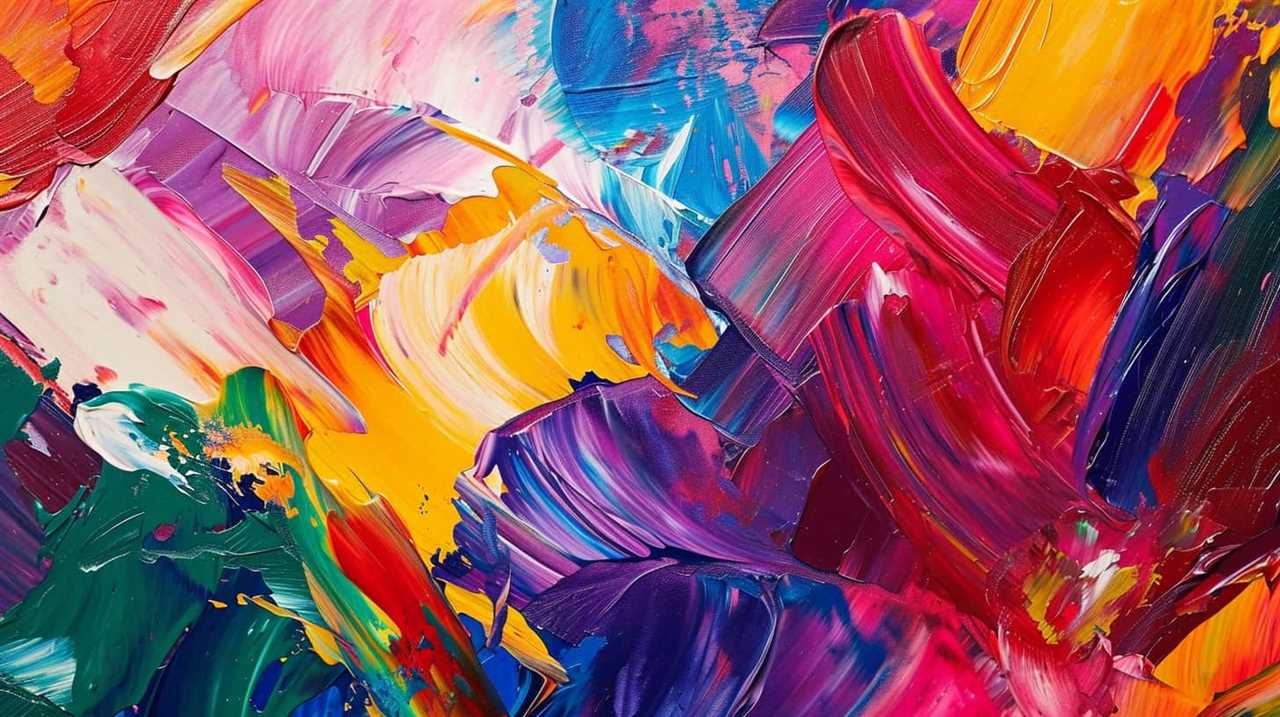
| Art Form | Emotion Evoked | Example |
|---|---|---|
| Painting | Awe | The vibrant colors of Van Gogh’s "Starry Night" leave viewers in awe of nature’s beauty. |
| Sculpture | Sadness | The melancholic expression on Michelangelo’s "David" evokes a sense of sadness and vulnerability. |
| Music | Joy | The uplifting melody of Beethoven’s "Ode to Joy" fills listeners with a sense of pure happiness. |
| Literature | Anger | The powerful words of Maya Angelou’s "Still I Rise" ignite a fire of righteous anger against injustice. |
| Dance | Serenity | The graceful movements of a ballet dancer convey a sense of serenity and inner peace. |
Through art, we are able to tap into our deepest emotions, experience emotional catharsis, and find solace, inspiration, and understanding. It is this ability of art to stir emotions that makes it such a powerful and transformative medium.
The Language of Emotion in Art
When it comes to art, emotions have a language of their own. Through brushstrokes, colors, and forms, art has the power to evoke a wide range of emotions within us.
It serves as a medium for artists to communicate their innermost thoughts and feelings, inviting viewers to connect and engage with their work on a deeper level.
The language of emotion in art is a universal one, transcending barriers of language and culture, and its impact on individuals and society can’t be underestimated.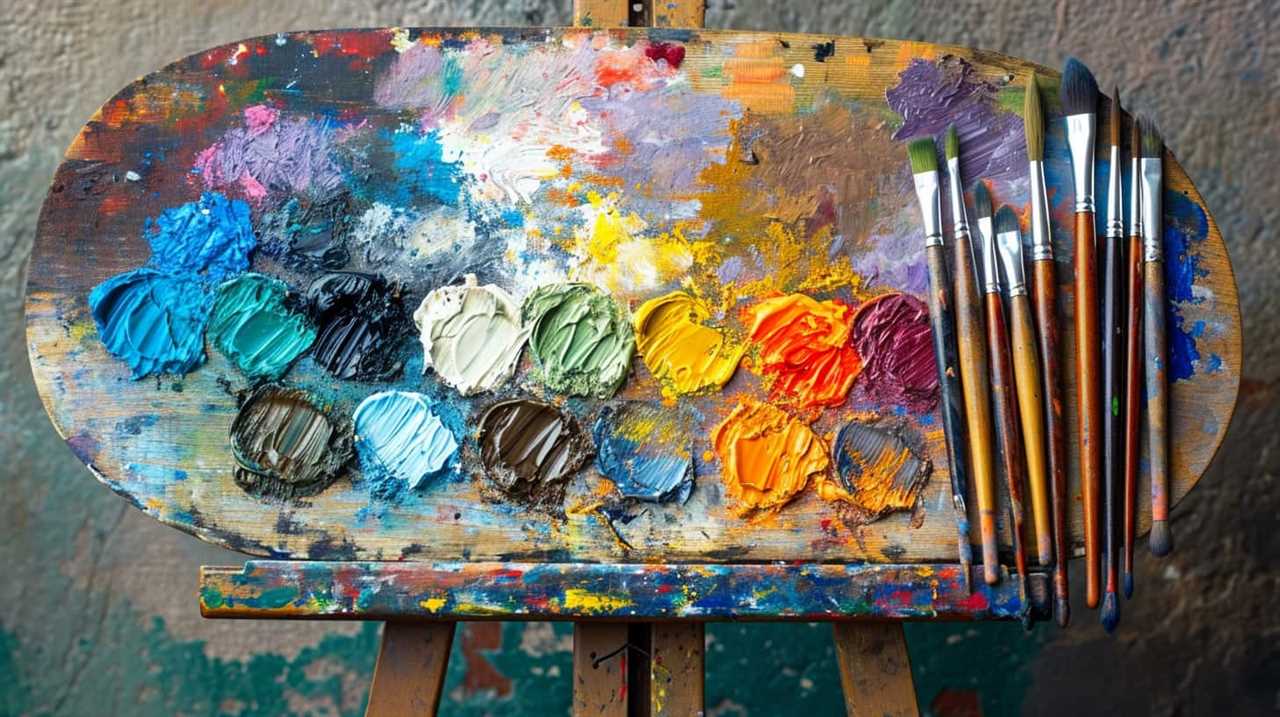
Art’s Emotional Power
We frequently experience the emotional power of art through the language of emotion it employs. Art has the unique ability to tap into our deepest emotions and stir something within us.
Whether it’s a painting, a sculpture, or a piece of music, art has the power to evoke a wide range of emotions, from joy and happiness to sadness and grief.
This emotional connection to art is what makes it such a powerful tool in art therapy and emotional healing. Through the process of creating and engaging with art, individuals can explore and express their emotions in a safe and non-judgmental space.
Art allows us to communicate and understand our emotions on a deeper level, leading to personal growth and healing.
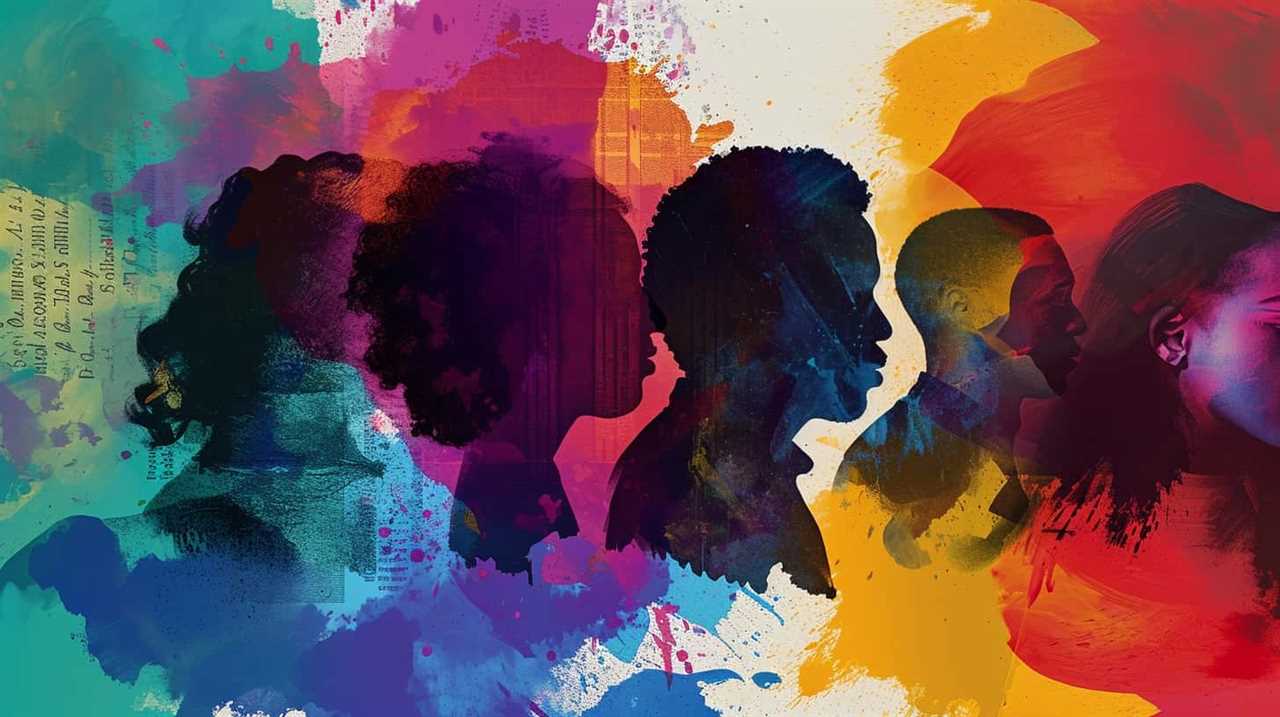
Communicating Through Art
Through our engagement with art, we can effectively communicate and convey emotions using the language of emotion inherent in artistic expression. Art has the unique ability to evoke and express a wide range of emotions, allowing us to connect with others on a deep and profound level.
Whether it’s a painting, a sculpture, or a piece of music, art has the power to touch our hearts and stir our souls. This expressive nature of art has led to the development of art therapy, a form of therapy that utilizes artistic techniques to help individuals explore and process their emotions.
Impact of Artistic Expression
Artistic expression has a profound impact on our emotions, igniting a collective experience that transcends words alone. It has been recognized for its therapeutic effects, providing emotional healing through art. The language of emotion in art speaks directly to the depths of our being, evoking a range of feelings and stirring our souls.
Through art, we can express our deepest emotions, giving them a form and substance that words cannot fully capture. It allows us to communicate and connect with others on a profound level, creating a shared experience that transcends cultural and linguistic barriers.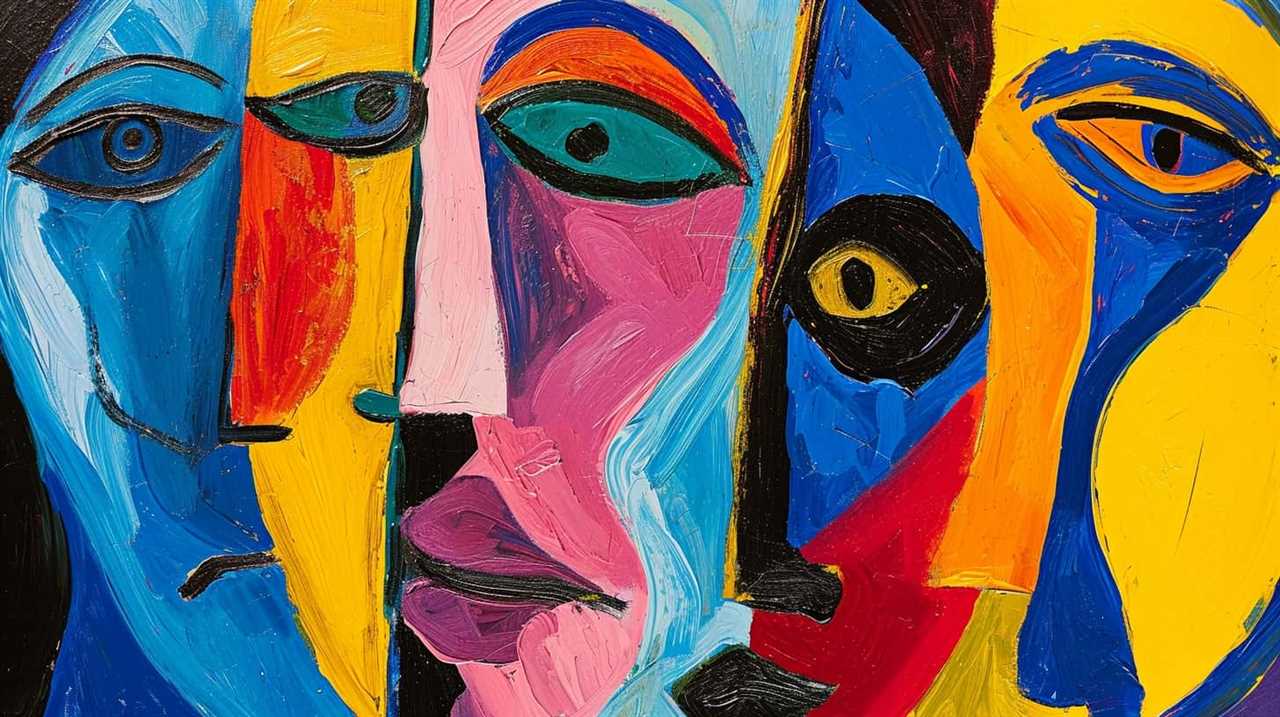
Art has the power to heal, offering solace and comfort in times of distress. It allows us to process and release our emotions, providing a cathartic outlet for our inner struggles and pain. The act of creating art can be a transformative experience, enabling us to channel our emotions in a constructive and meaningful way.
In a society that often prioritizes logic and reason, art serves as a reminder of our shared humanity and the importance of emotional expression. It encourages us to embrace our vulnerability and explore the depths of our emotions, fostering personal growth and self-discovery.
The therapeutic effects of art extend beyond the individual, reaching communities and society as a whole. Art can be a catalyst for social change, giving a voice to marginalized groups and challenging societal norms. Through art, we can create a space for dialogue, empathy, and understanding, fostering a sense of unity and collective healing.
In conclusion, artistic expression holds immense power in its ability to evoke and communicate emotions. It serves as a language of the soul, transcending barriers and offering emotional healing through art. By embracing and valuing the emotional impact of art, we can tap into its transformative potential and create a more compassionate and empathetic world.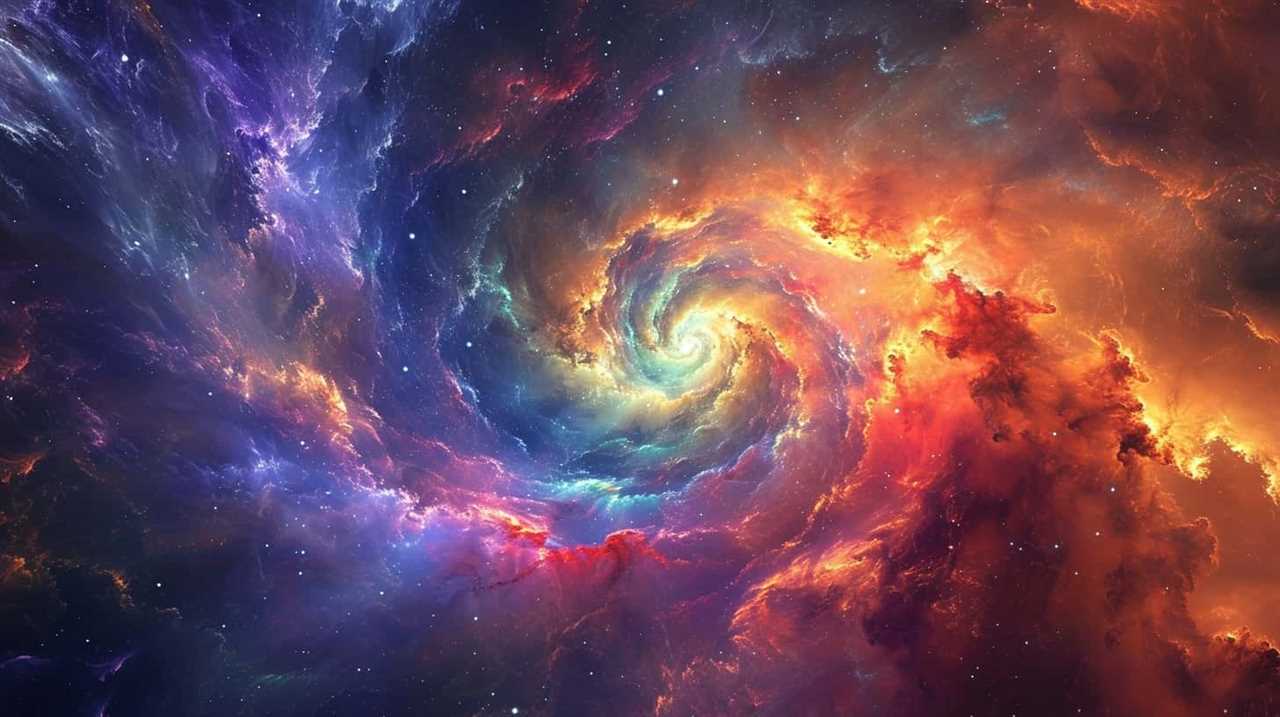
| Pros | Cons |
|---|---|
| Provides emotional healing and therapeutic effects | Can be subjective and open to interpretation |
| Fosters personal growth and self-discovery | May evoke difficult emotions and discomfort |
| Encourages empathy and understanding | Requires vulnerability and openness to emotions |
Capturing the Essence of Human Emotion in Art
Human emotion can be powerfully captured in art. Artists have long been fascinated with the exploration of vulnerability and the ability of art to evoke deep emotional responses. Through their work, they seek to tap into the universal human experience and elicit a range of emotions from their viewers. Here are three ways in which art captures the essence of human emotion:
- Visual storytelling: Artists have the unique ability to visually depict emotions through their chosen medium. Whether it’s a painting, sculpture, or photograph, art can convey complex emotions and narratives in a single image. The use of color, composition, and symbolism can evoke specific emotional responses and create a profound connection between the artist and the viewer.
- Expressive techniques: Artists often employ various techniques to convey emotions in their work. Brushstrokes, texture, and the manipulation of materials can all contribute to the emotional impact of a piece. By experimenting with different techniques, artists can effectively communicate the depth and intensity of human emotion.
- Cathartic release: Art has long been recognized for its therapeutic benefits. Creating art can provide individuals with a safe and non-judgmental outlet to express and process their emotions. Through the act of creation, artists can release pent-up feelings and find solace in the transformative power of art. Similarly, viewing art can also offer a cathartic experience, allowing viewers to connect with their own emotions and find comfort or inspiration in the work of others.
Art’s Emotional Resonance
Art’s emotional resonance can be felt deeply and universally. It has the power to touch our hearts and evoke a wide range of emotions. Whether it be a painting, a sculpture, or a piece of music, art has the ability to elicit strong emotional responses within us.
One way in which art can have a profound emotional impact is through art therapy. This therapeutic practice utilizes the creative process of making art to improve a person’s physical, mental, and emotional well-being. Art therapy provides individuals with a safe and non-judgmental space to express and process their emotions. Through the act of creating art, individuals can explore their innermost thoughts and feelings, leading to emotional healing and growth.
Art’s emotional resonance can also be seen in its ability to evoke empathy and understanding. When we engage with a work of art that depicts the human experience, we’re able to connect with the emotions portrayed and gain a deeper understanding of our own emotions as well as those of others. This emotional connection allows us to build bridges of empathy and compassion, fostering a sense of unity and shared humanity.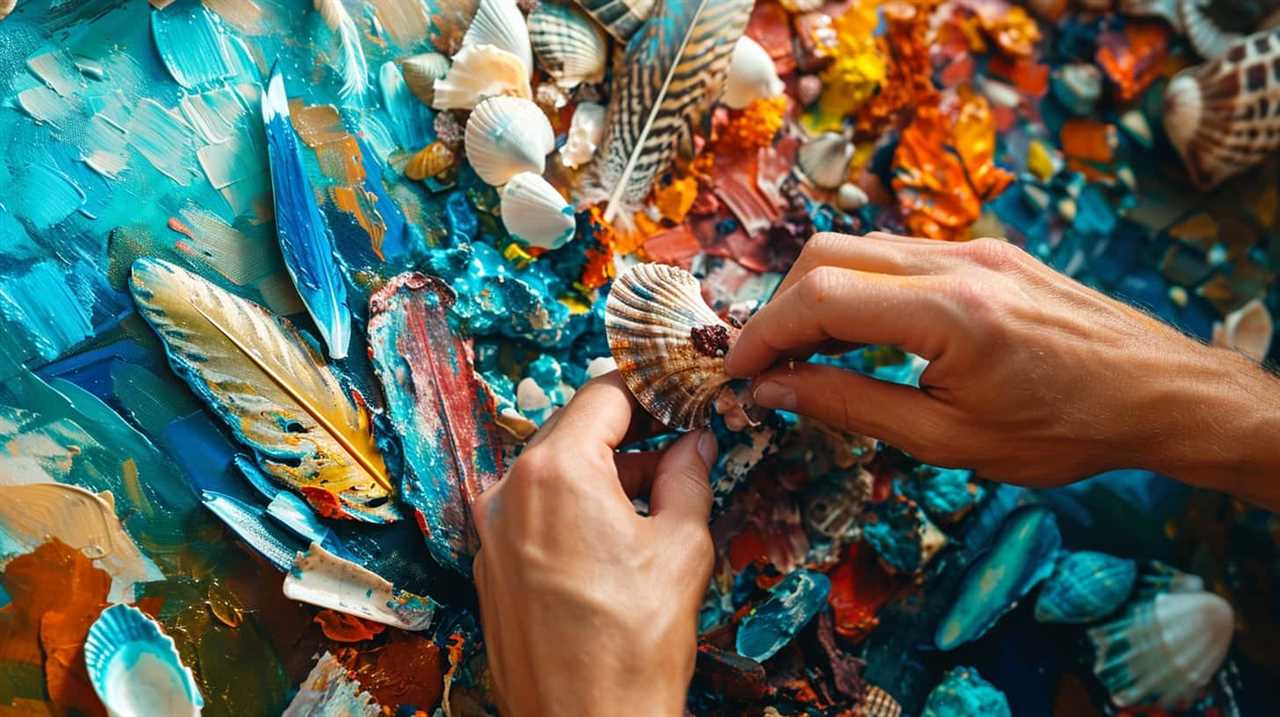
Art’s Role in Expressing Emotion
When creating art, we harness the power of visual expression to convey the depth of our emotions. Art has an important role in expressing emotion, especially in the context of therapy and emotional healing.
Through various artistic mediums, individuals can explore and communicate their innermost feelings, facilitating personal growth and healing. Here are three key ways in which art fulfills this role:
- Art as a form of self-expression: By engaging in artistic activities, individuals can express emotions that may be difficult to put into words. Art provides a nonverbal outlet for the expression of complex emotions, allowing for a deeper exploration of one’s inner world.
- Art as a means of communication: Art has the ability to transcend language barriers and reach a universal audience. Through their creations, artists can communicate their emotions to others, fostering empathy and understanding.
- Art as a therapeutic tool: The role of art in therapy is widely recognized. Engaging in artistic activities can promote self-awareness, emotional healing, and personal transformation. Art therapy interventions, such as painting, drawing, or sculpting, can help individuals process traumatic experiences, reduce stress, and improve overall well-being.
Can you provide examples of how art has emotionally influenced people?
Art has the power to evoke deep emotions and leave a lasting impact on people’s lives. Some of the best art influence quotes come from famous artists like Vincent van Gogh, who said, “I am seeking. I am striving. I am in it with all my heart.” This shows how art can deeply move and inspire individuals.
The Emotional Journey of Art
As we engage with art, we embark on an emotional journey that awakens our senses and stirs our innermost feelings. Art has the power to evoke a wide range of emotions within us, from joy and excitement to sadness and contemplation. This emotional journey isn’t only a form of entertainment or aesthetic pleasure, but it also has therapeutic effects on our well-being.
Art’s therapeutic effects are well-documented and have been recognized for centuries. When we immerse ourselves in a painting, a piece of music, or a play, we enter into a different world that allows us to explore and process our own emotions. The act of engaging with art can provide a safe space for us to release and express our feelings, offering a form of emotional healing.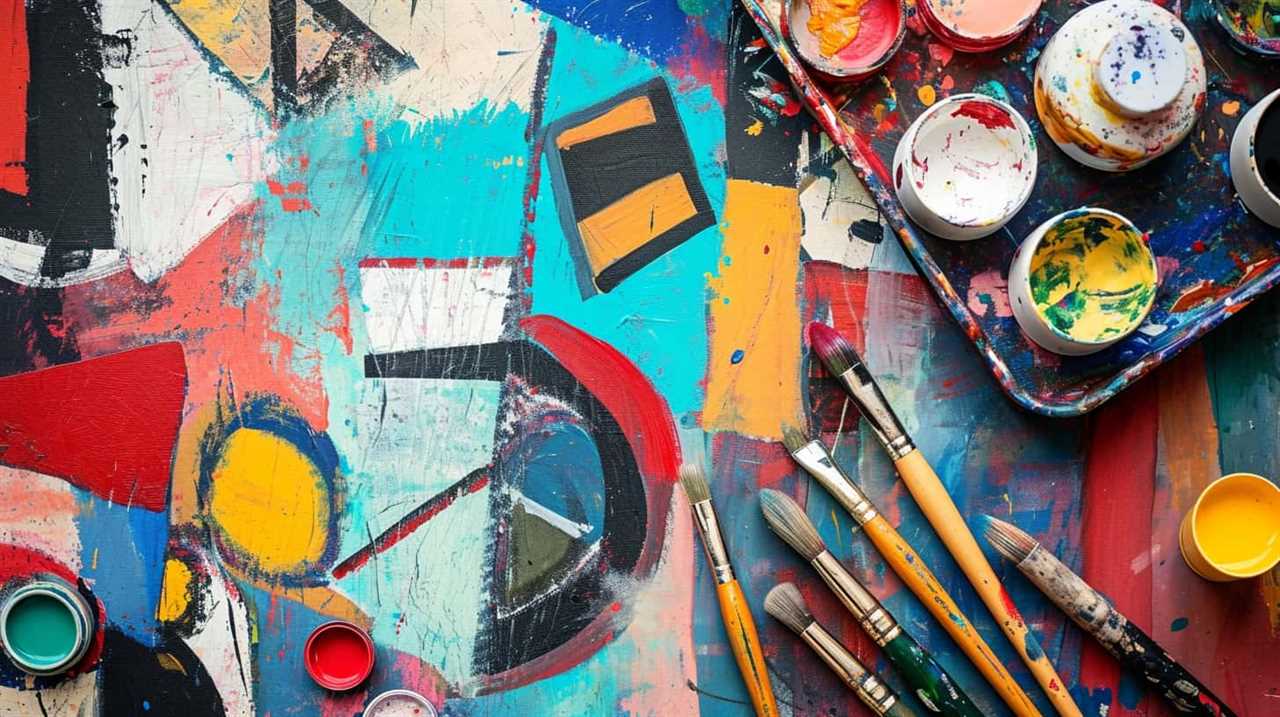
Art has the ability to touch us in profound ways, tapping into our deepest emotions and experiences. It can serve as a mirror, reflecting our own struggles and triumphs, and offering solace and comfort. Through art, we can find a sense of connection and understanding, both with ourselves and with others. It allows us to explore complex emotions that may be difficult to put into words, giving us a means of expression and catharsis.
Frequently Asked Questions
How Does Art Emotionally Impact Different Individuals?
Art emotionally impacts different individuals by evoking personal experiences and reflecting cultural and societal influences. Our emotional responses to art are shaped by our unique backgrounds, allowing us to connect and interpret the artwork in meaningful and diverse ways.
Can Art Evoke Emotions That Are Difficult to Express Through Words?
Art can indeed evoke emotions that are difficult to express through words. It serves as a powerful tool for emotional expression, allowing individuals to tap into their innermost feelings and experiences. The power of visual storytelling enhances the emotional impact of art narratives.
Is There a Specific Type of Art That Has a Greater Emotional Influence?
Certain art forms have a profound emotional impact that transcends cultural differences. From the visceral power of abstract expressionism to the poignant narratives of literature, each specific form has the potential to deeply move and resonate with individuals.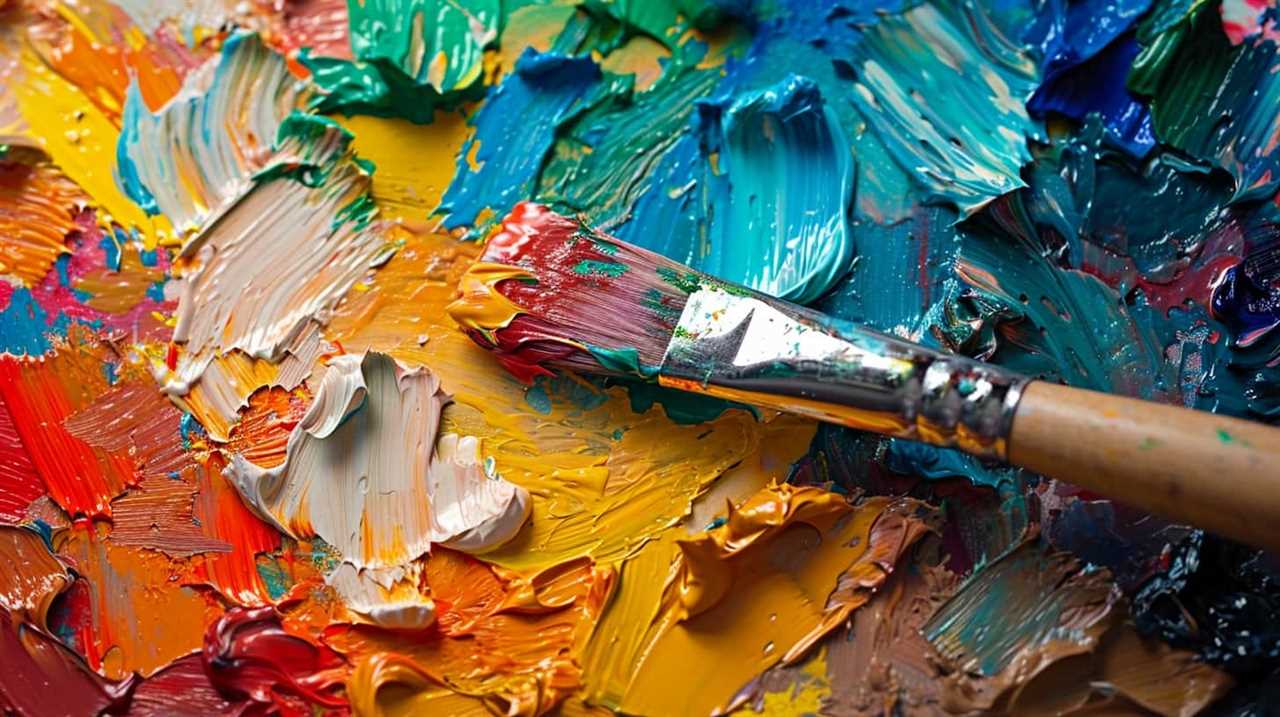
Are There Any Scientific Studies That Support the Emotional Impact of Art?
Scientific evidence supports the emotional impact of art, particularly through art therapy. Studies have shown that engaging in artistic activities can improve mental health, reduce stress, and promote self-expression, making it a valuable tool for emotional healing and well-being.
How Can Artists Effectively Convey Emotions Through Their Artwork?
When artists want to effectively convey emotions through their artwork, they can use color symbolism to evoke specific feelings in viewers. Additionally, incorporating personal experiences allows for a deeper and more authentic emotional connection.
Conclusion
In conclusion, art’s emotional influence is immeasurable and undeniable. It serves as a soulful gateway, evoking deep and transformative emotions within us.
Through its ability to stir and resonate with our innermost feelings, art captures the essence of human emotion and expresses it in a profound and meaningful way. It takes us on an emotional journey, allowing us to connect with our own emotions and the emotions of others.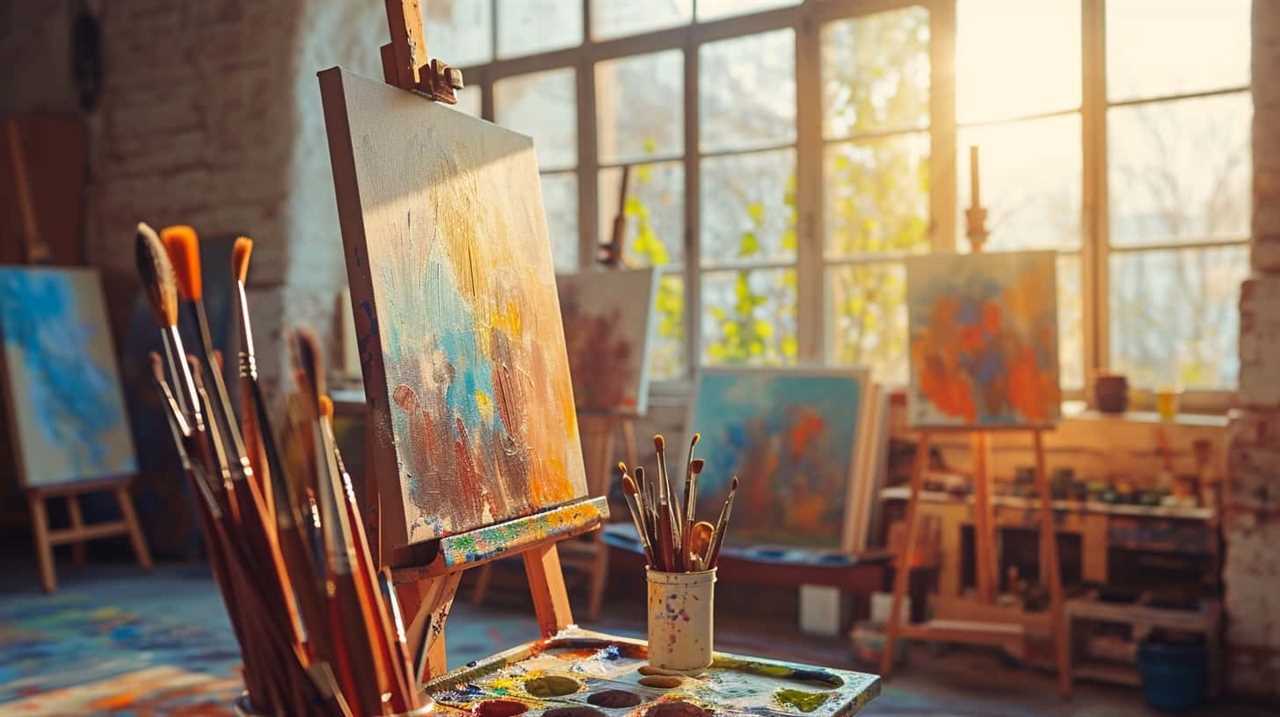
Art truly has the power to touch our souls and leave an indelible mark on our hearts.
Lauren’s talent in writing is matched by her passion for storytelling. Her love for books and deep understanding of culture and entertainment add a distinct flavor to her work. As our media and press contact, Lauren skillfully bridges the gap between afterQuotes and the broader media landscape, bringing our message to a wider audience.
-

 Funerals Quotations3 months ago
Funerals Quotations3 months agoSoothing Hope Quotes for Funeral Reflections
-

 TV Shows Quotations2 months ago
TV Shows Quotations2 months agoTop 4 Unforgettable TV Drama Monologues
-

 Movies Quotations4 weeks ago
Movies Quotations4 weeks agoUnforgettable Cult Movie Quotes: A Compiled List
-

 Education and Knowledge1 week ago
Education and Knowledge1 week agoUnlock Success with the Best Study Motivation Quotes
-

 Travel and Exploration Quotations3 weeks ago
Travel and Exploration Quotations3 weeks agoWisdom on Waves: Notable Maritime Explorer Quotations
-

 Education and Knowledge1 week ago
Education and Knowledge1 week agoBest Study Quotes: Unlock Student Potential!
-

 Military Quotations2 months ago
Military Quotations2 months agoInspiring Military Quotations for Strength & Honor
-

 Travel and Exploration Quotations3 weeks ago
Travel and Exploration Quotations3 weeks agoWhy Travel Teaches Unforgettable Life Wisdom?

















